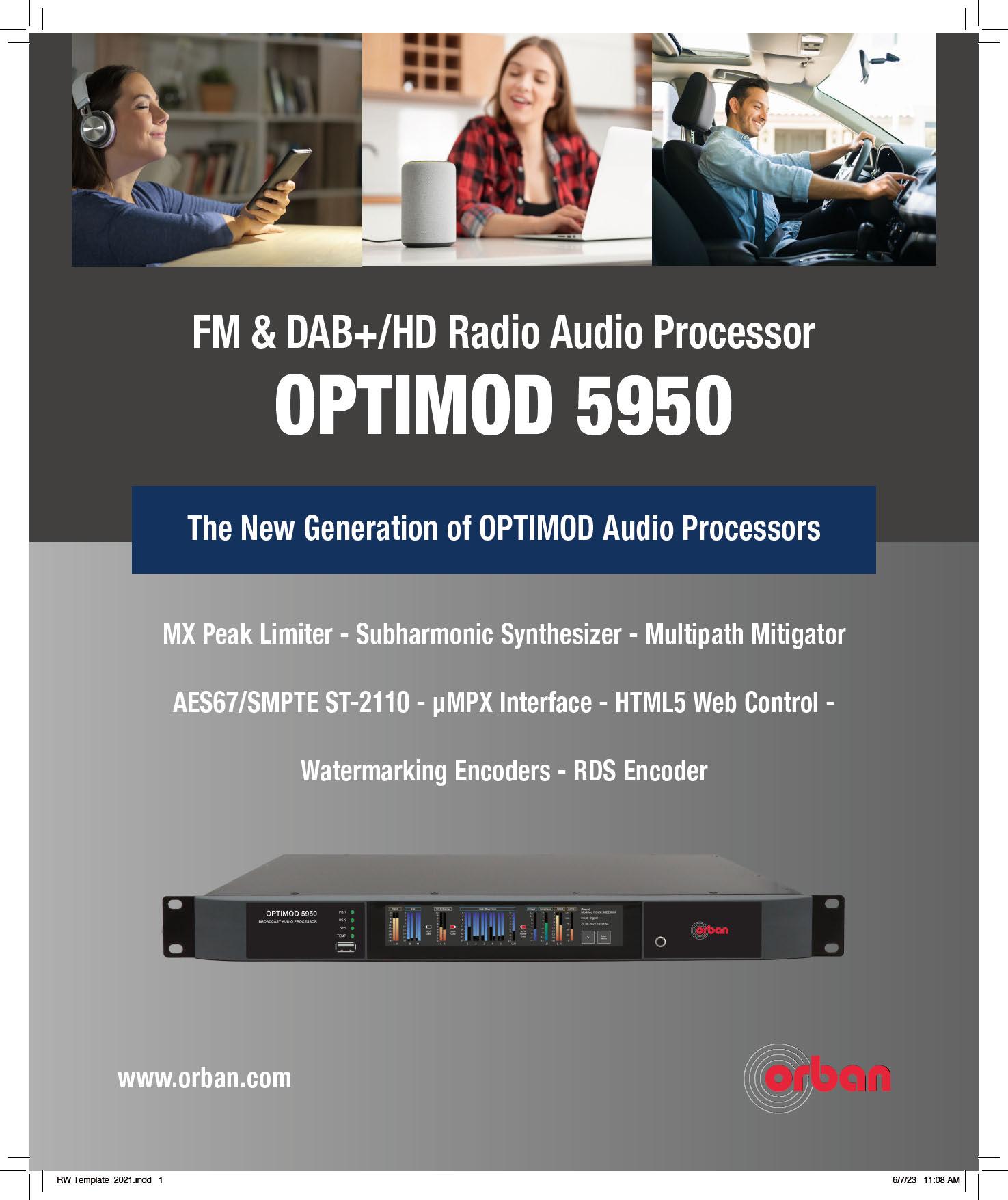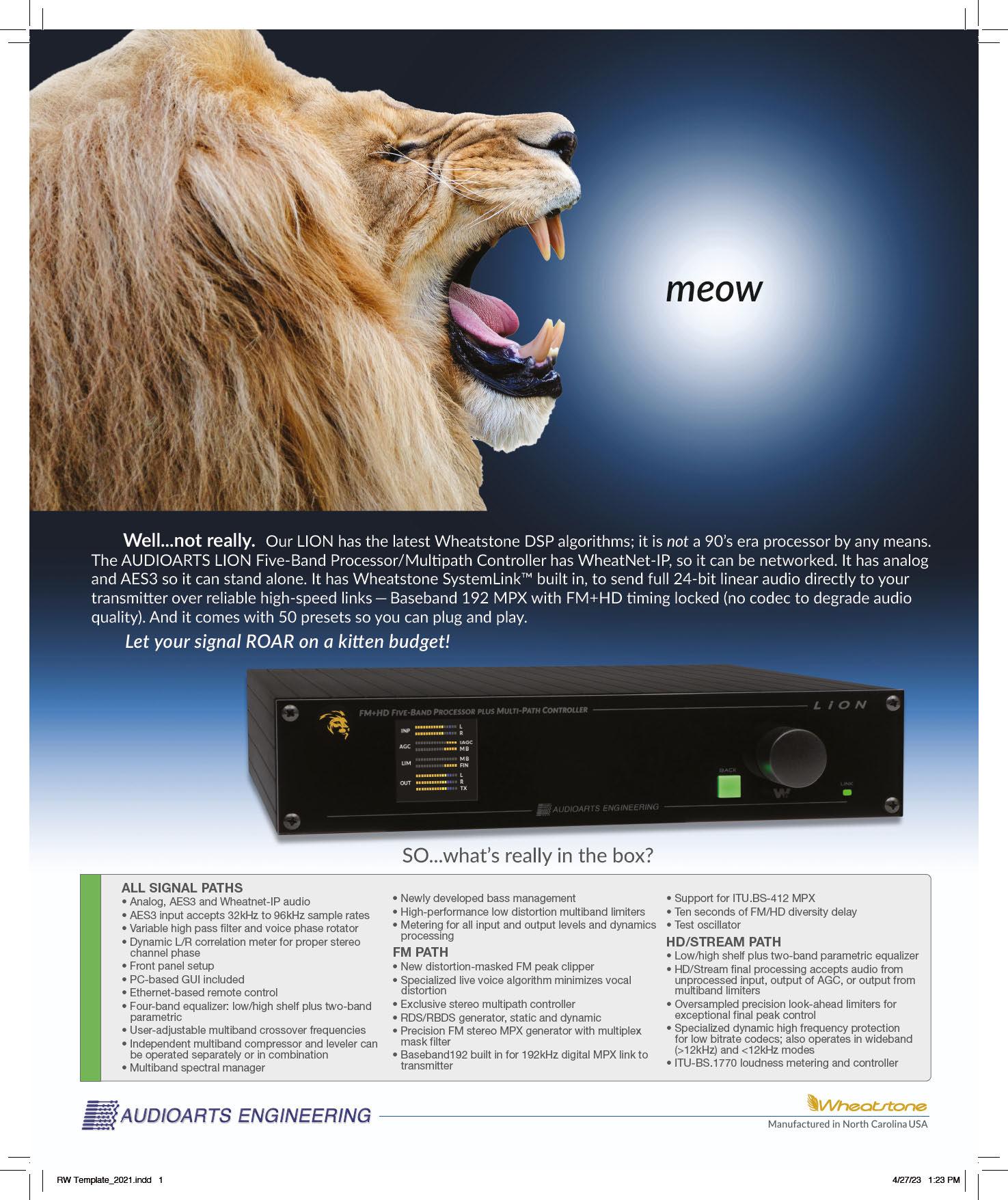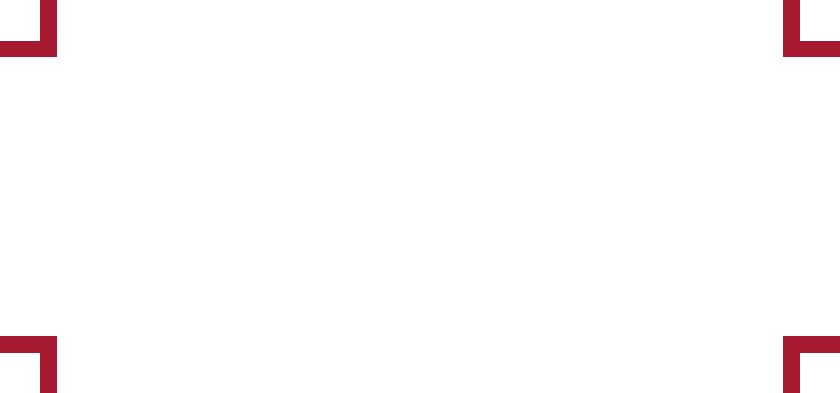

Make Your Streams Stand Out

Stream up to eight programs at once, each with four outputs for a total of 32 streams. Full suite of stream-specific audio processing tools. Optimize performance of audio content.
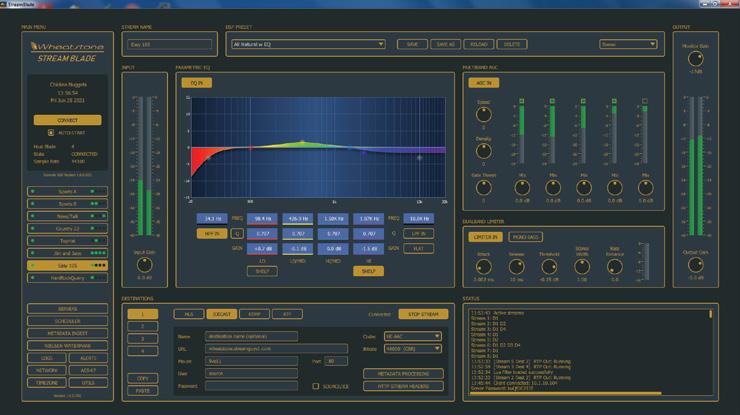
AAC, MP3 and Opus encoders. Reaching a broad range of end user devices and players.

Metadata agnostic. Lua transformation filters adapt metadata input from any automation system into any required output format.
Cloud-ready for the future, yet compatible with standard CDN and streaming platforms now. Supports HLS, Icecast, RTMP, and RTP streams.
All-inclusive Linux and AoIP appliance. No Windows® drivers, updates or PC needed. Add Streamblade to any audio network via WheatNet-IP, analog, AES3, or AES67 inputs or add Wheatstream to any existing WheatNet-IP or AES67 compatible networks.

wheatstone.com/stream-rw21a





www.radioworld.com
FOLLOW US
www.twitter.com/radioworld_news
www.facebook.com/RadioWorldMagazine
www.linkedin.com/company/radio-world-futureplc
CONTENT
Managing Director, Content & Editor in Chief Paul J. McLane, paul.mclane@futurenet.com, 845-414-6105
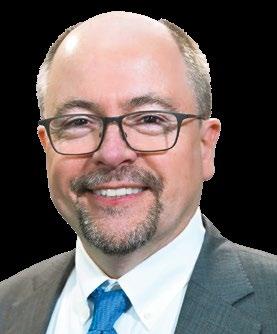
Content Producer & SmartBrief Editor Elle Kehres, elle.kehres@futurenet.com
Technical Advisors Thomas R. McGinley, Doug Irwin Technical Editor, RW Engineering Extra W.C. “Cris” Alexander
Contributors: Susan Ashworth, David Bialik, John Bisset, Edwin Bukont, James Careless, Ken Deutsch, Mark Durenberger, Charles Fitch, Donna Halper, Alan Jurison, Paul Kaminski, John Kean, Larry Langford, Mark Lapidus, Michael LeClair, Frank McCoy, Jim Peck, Mark Persons, Stephen M. Poole, James O’Neal, T. Carter Ross, John Schneider, Gregg Skall, Dan Slentz, Dennis Sloatman, Randy Stine, Tom Vernon, Jennifer Waits, Steve Walker, Chris Wygal
Production Manager Nicole Schilling
Group Art Director Nicole Cobban
Senior Design Director Lisa McIntosh
Senior Art Editor Will Shum
ADVERTISING SALES
Senior Business Director & Publisher, Radio World John Casey, john.casey@futurenet.com, 845-678-3839
Publisher, Radio World International
Raffaella Calabrese, raffaella.calabrese@futurenet.com, +39-320-891-1938
SUBSCRIBER CUSTOMER SERVICE
To subscribe, change your address, or check on your current account status, go to www.radioworld.com and click on Subscribe, email futureplc@computerfulfillment.com, call 888-266-5828, or write P.O. Box 1051, Lowell, MA 01853.
Licensing/Reprints/Permissions
Radio World is available for licensing. Contact the Licensing team to discuss partnership opportunities. Head of Print Licensing Rachel Shaw licensing@futurenet.com
MANAGEMENT
SVP Wealth, B2B and Events Sarah Rees
Managing Director, B2B Tech & Entertainment Brands Carmel King
Managing Vice President of Sales, B2B Tech Adam Goldstein
Head of Production US & UK Mark Constance
Head of Design Rodney Dive
FUTURE US, INC.
Future US LLC, 130 West 42nd Street, 7th Floor, New York, NY 10036
All contents ©Future US, Inc. or published under licence. All rights reserved. No part of this magazine may be used, stored, transmitted or reproduced in any way without the prior written permission of the publisher. Future Publishing Limited (company number 02008885) is registered in England and Wales. Registered office: Quay House, The Ambury, Bath BA1 1UA. All information contained in this publication is for information only and is, as far as we are aware, correct at the time of going to press. Future cannot accept any responsibility for errors or inaccuracies in such information. You are advised to contact manufacturers and retailers directly with regard to the price of products/services referred to in this publication. Apps and websites mentioned in this publication are not under our control. We are not responsible for their contents or any other changes or updates to them. This magazine is fully independent and not affiliated in any way with the companies mentioned herein.
If you submit material to us, you warrant that you own the material and/or have the necessary rights/ permissions to supply the material and you automatically grant Future and its licensees a licence to publish your submission in whole or in part in any/all issues and/or editions of publications, in any format published worldwide and on associated websites, social media channels and associated products. Any material you submit is sent at your own risk and, although every care is taken, neither Future nor its employees, agents, subcontractors or licensees shall be liable for loss or damage. We assume all unsolicited material is for publication unless otherwise stated, and reserve the right to edit, amend, adapt all submissions.
Radio World (ISSN: 0274-8541) is published bi-weekly with additional issues in February, April, June, August, October and December by Future US, Inc., 130 West 42nd Street, 7th Floor, New York, NY 10036. Phone: (978) 667-0352. Periodicals postage rates are paid at New York, NY and additional mailing offices.
POSTMASTER: Send address changes to Radio World, PO Box 1051, Lowell, MA 01853.
mad as hell
Like the anchorman in the famous scene in “Network,” David Bialik got himself “het up” recently.
 Paul McLane Editor in Chief
Paul McLane Editor in Chief
The veteran engineer, whose commentaries are a regular feature on our website, delivered a rant (his word) about the direction of radio — not just AM but FM as well.
He recently purchased a new car and discovered that the auto dealership staff was not knowledgeable about HD Radio. “Its staff did not know or care that there are stations in digital.” Further, when they were showing him the car, the radio kept buffering, and a mechanic suggested turning off the digital.
“Yes, analog won. When I was then shown the apps that play streams, we noticed that the analog radio playing music sounded superior to the stream.”
David is an evangelist for radio stations promoting their streams better and for paying attention to the quality of those streams, but also for not being embarrassed to promote their AM signals.
He also laments that more and more small and mediummarket FM stations lack local hosts, with poorly scripted liners read by the same talent in multiple markets. “Many stations are also not equipped to handle local news stories or information about developing emergencies or don’t even have a physical local presence. Stations are cutting costs by not having talent. What’s next? Are we going to listen to radio hosted by artificial intelligence? Was Max Headroom a prophecy?”
Find his columns at radioworld.com. Type Bialik into the search block. And you can comment on this or any articles by emailing me at radioworld@futurenet.com
3 From the Editor
4 Newswatch
5 GM goes embedded in its EVs FEATURES
10 Protect the phone line at your transmitter site
14 Security considerations for STL applications
18 KQED renovates, re-relocates, revitalizes
OPINION
29 Anstandig addresses concerns over AI
Please recycle. We are committed to only using magazine paper which is derived from responsibly managed, certified forestry and chlorine-free manufacture. The paper in this magazine was sourced and produced from sustainable managed forests, conforming to strict environmental and socioeconomic standards.
Bob Bittner Dies
Bob Bittner died in May. He was a longtime radio personality and owner of WJIB(AM) in Cambridge, Mass., playing music of the 1930s through 1960s.
Somerville City Council President Ben Ewen-Campen tweeted, “What a beautiful life bringing this wonderful music into our homes, never playing ads, and reading his own PSAs.” Bittner also owned several other stations.
Radio World contributor Donna Halper wrote that “while his stations all had FM translators, he was committed to providing music on AM. He programmed each of his stations himself. ... He had a passionate and devoted audience, and they gladly contributed so that the stations would continue to broadcast.”
Scott Fybush of NorthEast Radio Watch wrote, “More than just a unique oneman radio operator, Bob was a good friend, not only to me but to broadcasters all over New England and beyond, all of whom are keenly feeling his loss right now.”
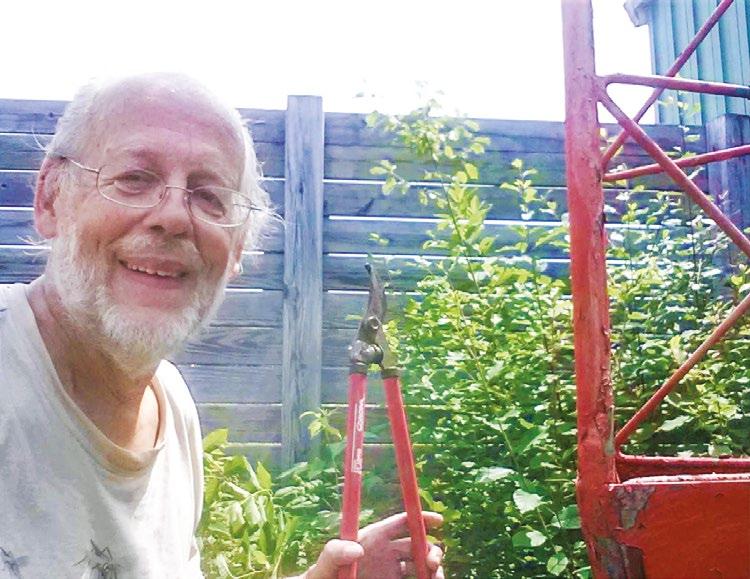
Bittner is shown in a 2018 photo from his Facebook page.
Don’t Mess With Ham Radio
A California man faces a possible $24,000 fine for allegedly playing recordings during an amateur radio net and not providing his call sign.

Philip Beaudet was issued a notice of apparent liability by the FCC for “apparently willfully and repeatedly interfering with the radio communications of the Western Amateur Radio Friendship Association while it was attempting to hold a regularly scheduled net and for failing to provide station identification on amateur radio frequencies.” A net is an on-air meeting of amateurs.
Beaudet is licensee of N6PJB in Burney, Calif.
The FCC said it received numerous complaints about him. It says that its agent went to Burney three times in late 2022 and in each case heard Beaudet playing recordings on 3.908 MHz that caused interference to the WARFA net while failing to provide his own call sign.
It said he has 30 days to pay the proposed fine or to respond with reasons it should be reduced or cancelled. “We caution Beaudet that future violations of this kind may result in significantly higher forfeitures or revocation of his amateur license,” it added.
GM goes embedded in its EVs
Support for Apple CarPlay and Android Auto to end in some vehicles
With the broadcast industry and its allies in Washington turning up the heat on automakers to keep AM in cars, any glimpse into what automotive companies are thinking about the dashboard is important.
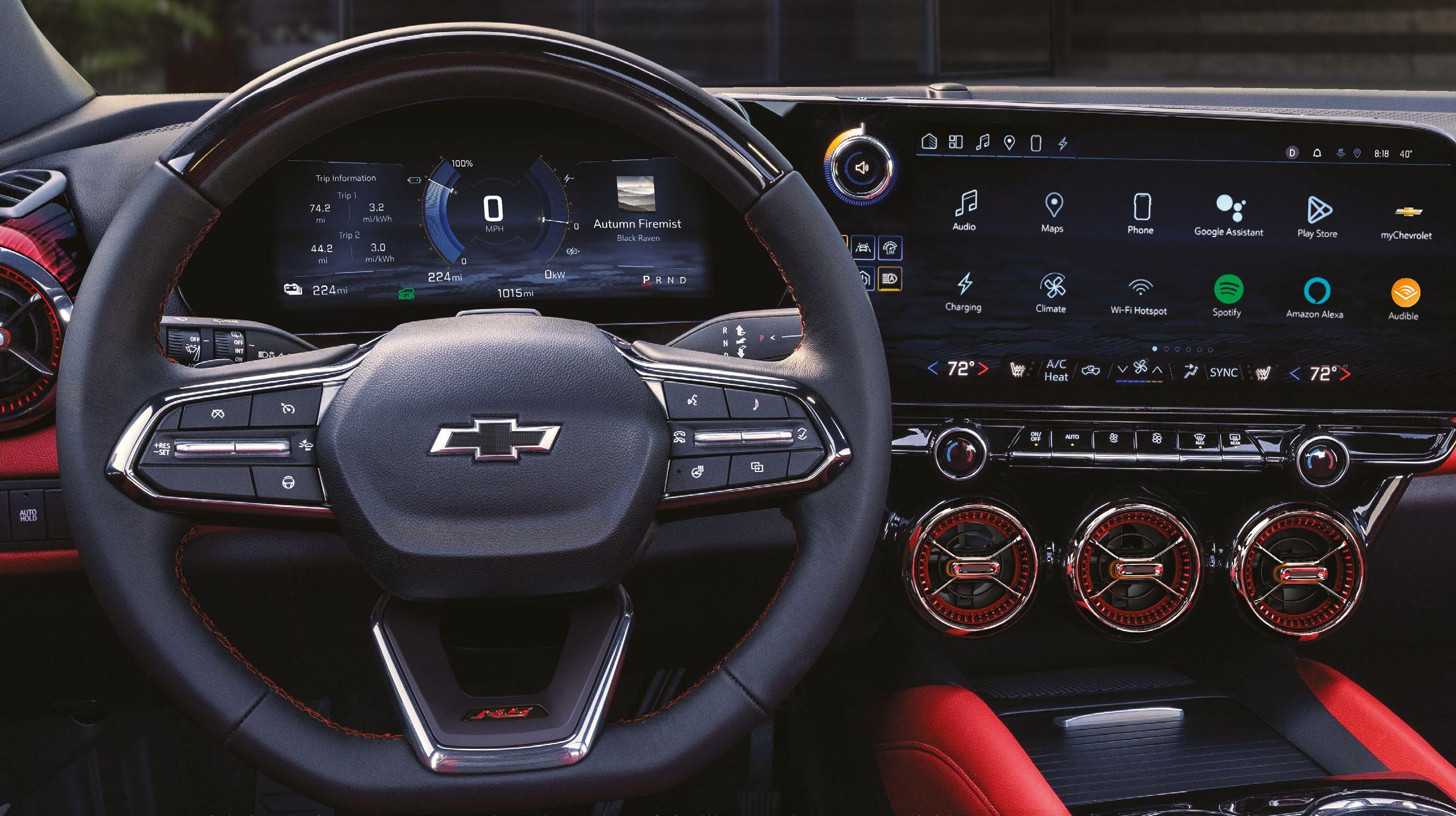
General Motors recently outlined its infotainment plans for new electric vehicles. Notably, the automaker says it will ditch phone projection systems for Apple CarPlay and Android Auto in a number of 2024 models.
In a media fact sheet in March, GM announced the move to an embedded Android Automotive system from Google in EVs. The strategy will not apply — for now — to internal combustion engine vehicles, according to the automaker.
“To help customers have seamless access to the full breadth of these experiences within our advanced invehicle displays, we will be integrating industry-leading
applications such as Google Maps, Google Assistant, Amazon Music, Audible, Spotify, YouTube Music and more,” GM stated in the release.
GM’s announcement contained no mention of AM/FM radio capability in the infotainment strategy (and it was published prior to the introduction of legislation that would mandate the inclusion of AM).
However, a GM spokesperson told Radio World in a separate statement: “At this time, we continue to offer AM/FM radio, but are always evaluating what features and services we will offer on future vehicles. We also offer SiriusXM in new GM vehicles, as well as streaming radio content through apps like iHeartRadio, TuneIn and others.”
A different future in view
One observer found it notable that GM didn’t mention radio of any kind in its media release. Roger Lanctot, director of
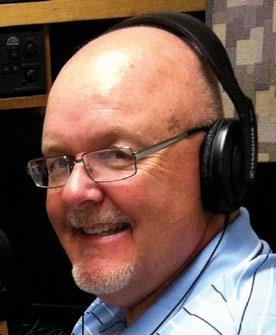 Writer
Randy J. Stine Radio World’s lead news contributor wrote about Ampers in the previous issue.
Above
Writer
Randy J. Stine Radio World’s lead news contributor wrote about Ampers in the previous issue.
Above
automotive connected mobility for Tech Insights, said the omission should be mildly alarming to broadcasters.
“It does cause one to — with good reason — read between the lines. The message is consistent with the recent Mercedes-Benz Operating System investor presentation of delivering most or all infotainment experiences via the embedded system in the car — i.e. the OnStar/cellular connection,” Lanctot says.
He noted that the initial GM announcement hadn’t mentioned satellite radio, either. “Clearly SiriusXM content can be delivered into the car via a GM store app instead of with the SiriusXM connectivity module and related antenna and software.”
Cellular connectivity will be king, he said, and radio should be preparing for a future that may be dependent at least in part upon that connectivity.
“I think it is important to take GM seriously — especially when it’s clear that they are responding to the interests of a large interested party such as Google,” he says.
The good news for radio broadcasters, according to Lanctot, is that things don’t happen very quickly in the

Car talk
For more about trends in infotainment systems, visit radioworld. com/tag/connectedcars.
What General Motors said
The media sheet released on March 31 was titled “GM Update on InVehicle Infotainment Strategy.”
It described new “integrated” features and services for its EVs and software platforms, such as intelligent EV routing based on sensor data like state of charge and tire pressure; locating charging stations with station availability information; creating routes optimized for driver assistance technologies; controlling features with voice commands; and downloading software updates easily.
GM continued:
“To help customers have seamless access to the full breadth of these experiences within our advanced in-vehicle displays, we will be integrating industry-leading
applications such as Google Maps, Google Assistant, Audible, Spotify and more.
“As a result of this strategic approach, we will be moving beyond phone projection systems, namely Apple CarPlay and Android Auto.
“The new built-in and integrated experience, with features and apps that will evolve over time, will begin with select EVs launching later this year and apply more broadly to future EVs in subsequent years. Future EVs with this new infotainment system will also benefit from GM’s new Ultifi software platform, allowing for ongoing innovation from GM and third-party collaborators. The new experience will be an evolution of the Google built-in system recently launched on select GM vehicles, but without phone projection.”
It said that internal combustion engine vehicles are not affected “at this time” and will retain Apple CarPlay and Android Auto capability.
automotive industry. “I expect cars will be equipped with FM (at least) radios, for the next five to six years,” he wrote in an email.
Auto industry observers say they believe other automakers are likely to follow GM’s “built-in tech” strategy, which is similar to how Tesla handles in-cabin infotainment, even though consumers have rejected previous OEM infotainment systems that didn’t work smoothly.
The National Association of Broadcasters is monitoring changes in the in-car entertainment space. It didn’t specifically comment on GM’s media release, but a spokesman for the trade group noted that its innovation arm, PILOT, completed its work on the broadcast radio interface within Android Automotive last year, in conjunction with Xperi.
GM says it is using Android Automotive as the base platform OS for infotainment experiences in GM EVs and gas/diesel vehicles. Google built-in applications as well as GM and other third-party Android applications also run on the platform, according to GM.
The NAB spokesman told Radio World that PILOT “focused on the broadcast framework, reference radio applications and a gap analysis outlining discrepancies and proposed solutions to be implemented in the Android Automotive operating system for full broadcast radio support globally.
“PILOT also initiated a technical review with the Android Automotive team. The initiative included broadcasters from the U.S., the U.K., the EU, Germany, Australia and Japan.” It is unclear to what extent that PILOT project has influenced the Android Automotive platform.
Embedded solutions
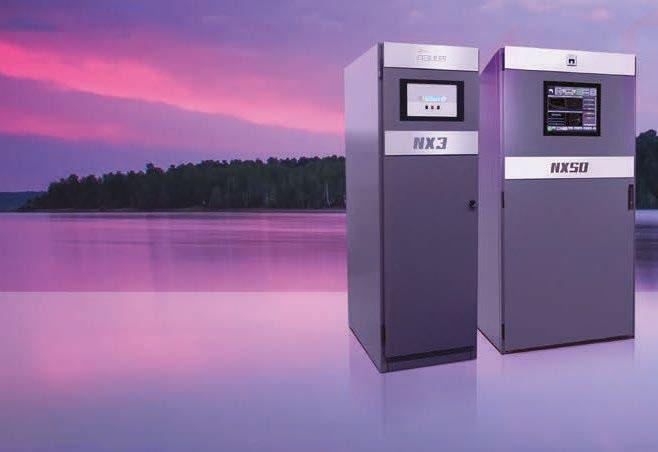
It’s no secret that Detroit automakers hope to reclaim territory in the dashboard once ceded to tech companies and instead use their own infotainment systems — in part to gather user data and collect subscription fees.
Nick Festa, GM’s director of digital business, told the Detroit News that the company’s new infotainment strategy exposes customers to an in-car digital experience.
“I would say it’s not about data per se, it’s about understanding,” Festa told the newspaper. “As we are trying to ramp up for vehicle capabilities like EV and energy management, like hands-free driving, like overthe-air software updates that we want to provide to our customers, having that understanding helps us make a better product.”
GM’s decision to omit the phone projection systems in future EVs means it can scale its Ultifi software program, which includes next-gen digital interface and connectivity systems, according to the Detroit News story. Festa cited the consumer experience as a reason for dropping Apple CarPlay and Android Auto. “Customers [would] find themselves in situations where they’re bouncing back and
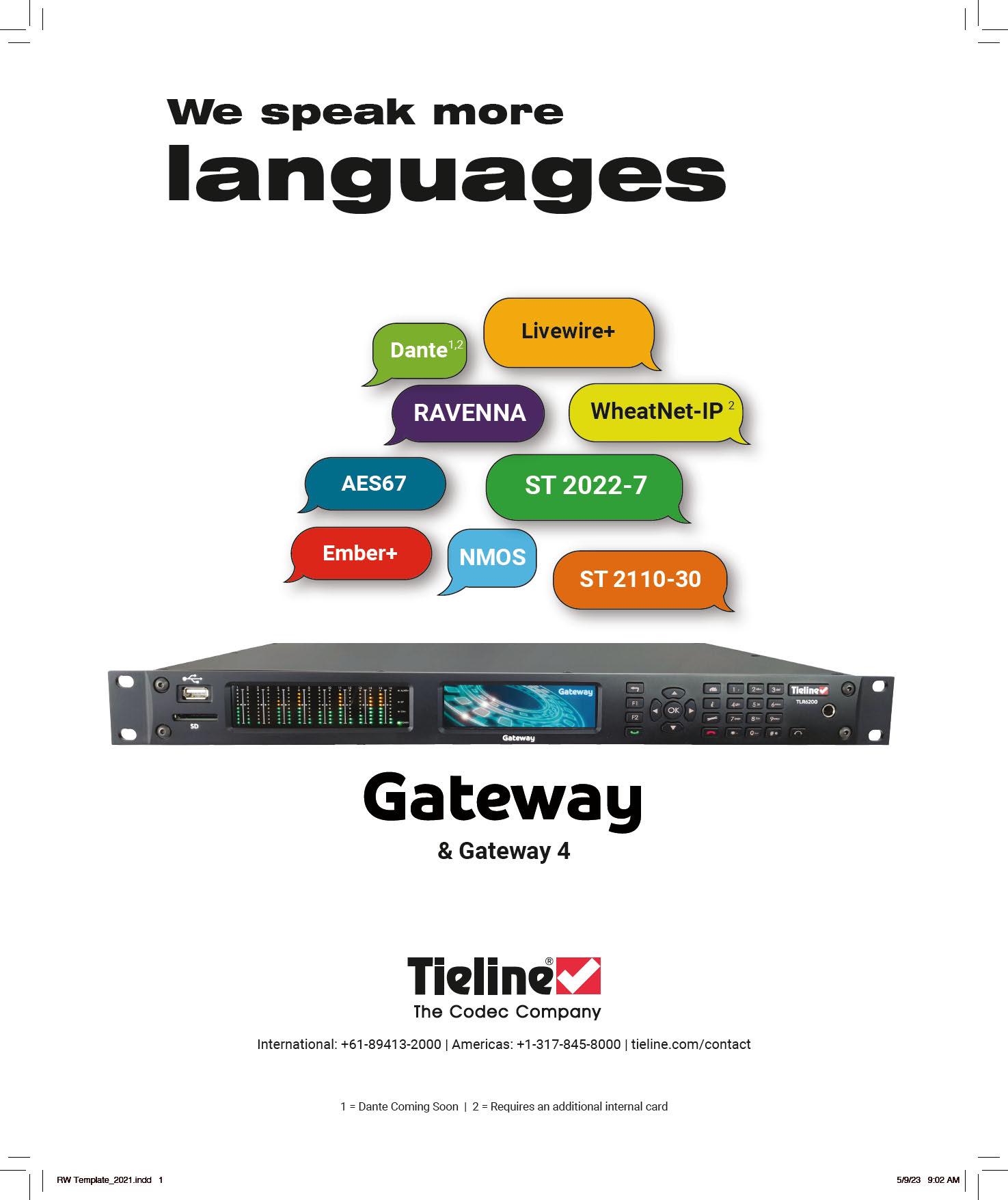
Connected Cars
forth in between different ecosystems for whatever job they’re seeking to accomplish,” Festa told the Detroit News.
In the March release, GM said its infotainment features and apps continue to evolve.
The shift to a “built-in and integrated infotainment experience” will begin with the 2024 Chevrolet Blazer EV, shipping this summer to dealers in the United State and Canada. The changes will apply to other EV launches this year including the 2024 Chevy Equinox and the new high-end 2024 Cadillac CELESTIQ. Plans also call for the 2025 GMC Sierra EV to include the Google-based infotainment system.
A GM spokesman said in a statement to Radio World: “An embedded solution allows customers to not only take advantage of infotainment options within the display, but integrates vehicle systems that aren’t possible through just phone projection.”
The automaker says a cornerstone of its infotainment strategy involves creating integrated experiences that transform how customers engage with their vehicles, such as controlling vehicle functions with voice commands, downloading the latest software updates and apps over the air, and focusing on simple and customizable screens that provide access to the larger GM ecosystem.

Edward Kummer, chief digital officer for GM, was quoted in the March release: “As we scale our EVs and launch our
The customizable car
Ultifi, mentioned in story above, was announced by General Motors in 2021 as “an end-to-end software platform designed to unlock new vehicle experiences and connect customers’ digital lives.”
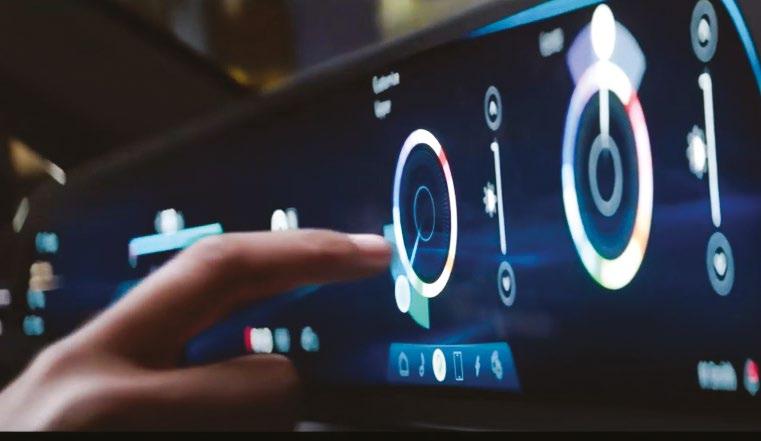
The company says Ultifi enables frequent delivery of softwaredefined features, apps and services to customers over the air with an eye to building customer loyalty. It includes an app store. “Themes” allow the user to customize things like seating position, sounds and lighting; owners thus can personalize their cars like they can
Ultifi software platform, we can do more than ever before with in-vehicle technologies and over-the-air updates. All of this is allowing us to constantly improve the customer experience we can offer across our brands.”
Apple users will be unable to download Apple-based apps, like Apple Music and Apple Podcasts, to GM’s new system in EVs. Customers with Apple and Android smartphones will continue to have access to hands-free calling, hands-free voice texting and streaming music through Bluetooth functionality in the vehicle.
“Customers can still connect to their phones using Bluetooth,” GM wrote to Radio World, “though the Google built-in system is very capable of helping them navigate, make phone calls, safely send and receive text messages, and access a broad selection of entertainment. Apple music, for instance, is still accessible via Bluetooth. With a phone paired, customers can activate Siri with voice commands and ask to play something from their Apple Music library.”
In related news, GM in May announced the hiring of former Apple executive Mike Abbott to lead its software development program. Abbott was VP of cloud services at Apple, according to a GM press release. GM said Abbott “will lead a new integrated end-to-end software organization focused on digital delivery of services and features.”
customize their smartphones.
The system sits atop GM’s electrical architecture called Vehicle Intelligence Platform. “On top of this foundation, GM engineers will separate key software into a new centralized layer that acts as a powerful hub for vehicle systems,” GM said in 2021. “The Ultifi platform will then enable accelerated development and deployment of software and applications over the air to millions of customers, without affecting basic hardware controls.”
 John Bisset
John Bisset
The author is in his 33rd year of writing Workbench. He handles western U.S. radio sales for the Telos Alliance and is a past recipient of the SBE’s Educator of the Year Award.
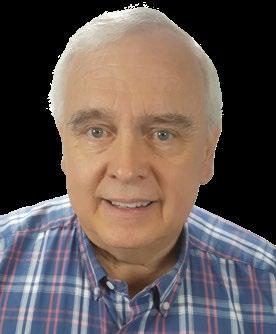
Protect the phone line at your transmitter site
Fred shares a tip from Charlie, and we share it with you!
Fred Baumgartner writes from Colorado to tell us that Charlie Sears, the transmitter engineer for WTTV(TV) in Indianapolis at the turn of the current century, built and used DIY surge protectors on all phone lines coming into his transmitter facilities.
Fred has done the same ever since, using them on any twisted pair — audio, data, etc. — exposed to lightning-induced pulses. Many transmitter sites still retain POTS lines for emergencies, and some have twisted pairs (not Ethernet) between buildings.
The protector in the photo is 30 years old; Fred uses it at home to separate his house and Vonage IP/telephone box from the more exposed lines to the outside ranch buildings.
Without protection, Fred says, his telephone-connected gear routinely was destroyed by lightning. Since he began installing these decades ago, he has not suffered equipment damage.
Construction is as simple as it looks. There are no magic component values. The more turns on the chokes the better.
Charlie used two 2-inch PVC pipes for the inductors. Wire was whatever was on the bench. The common mode choke (toroid) is on a “mystery” core from a hamfest. The four “X” surge suppressors are most often two NE-2 neon bulbs in series (they will light up when the line rings, and if they do not, you can go to parallel NE-2s).
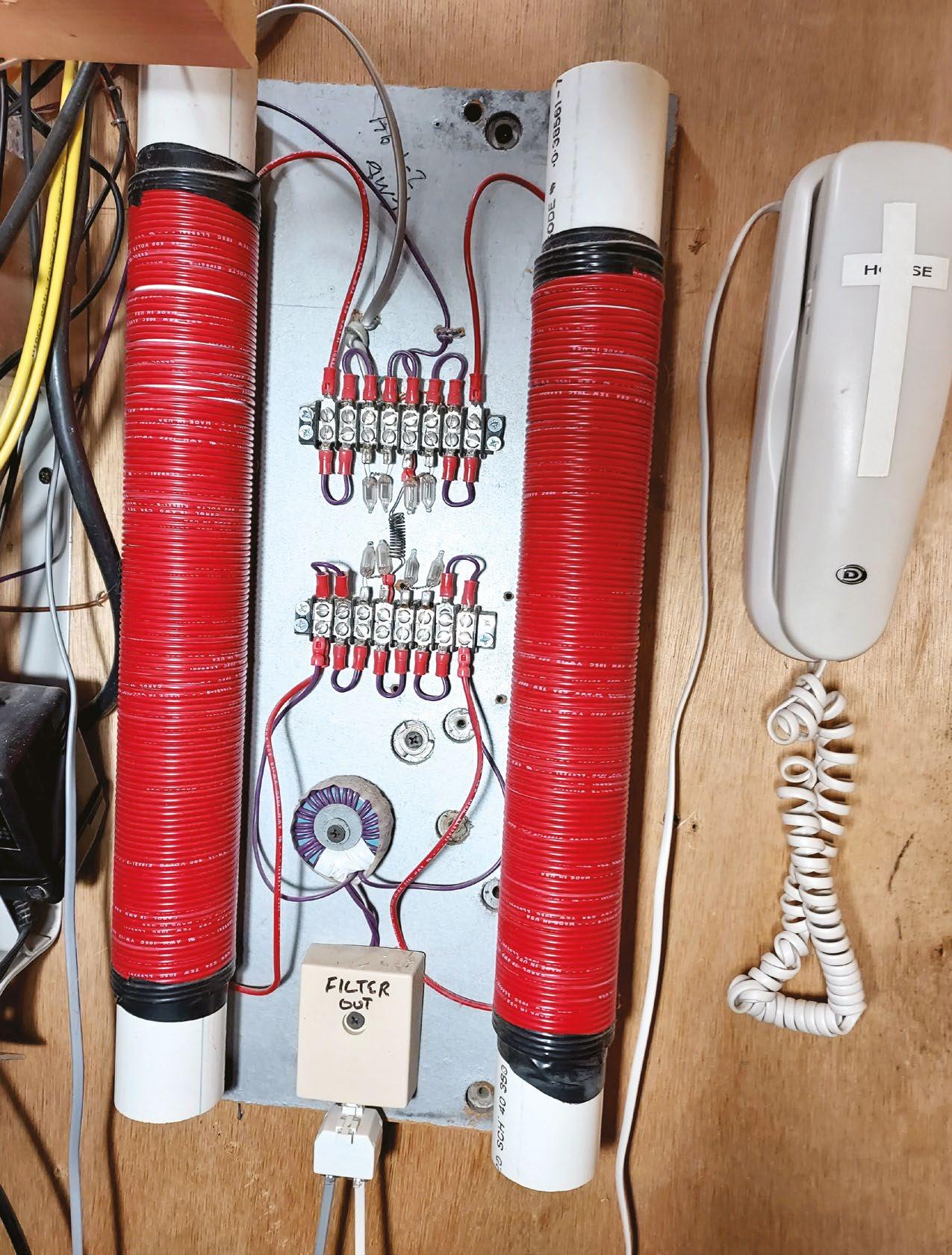
Other lower-voltage surge suppressors typically use varistors, MOVs or gas discharge tubes, when the lines are low-voltage control or inter-building audio.
Referring to the schematic, the output side ground is the building common ground, while the input side ground is typically the phone company’s shield (which is found on direct burial multi-pair phone wire).
Fred’s own occasional modification is to place 100 mA fuses at the inputs, but they are no longer readily available, and you would need to replace them with some regularity. Fred doubts the fuses ever really helped.
Crown amplifier guide
From Florida, Wayne Eckert sends a link to a useful guide published by the Crown Amplifier division of Harman. While the intended readership is sound support and PA system technicians, the information it contains, especially the connector wiring guides, will be useful to broadcast engineers. The 35-page guide is thorough when it comes to amplifiers, a great tutorial or refresher.
One section that caught Wayne’s eye was a warning about wiring up speakers and amplifiers using connectors that could be plugged into AC power sockets! Accidental AC input will be an electrifying experience for your equipment.
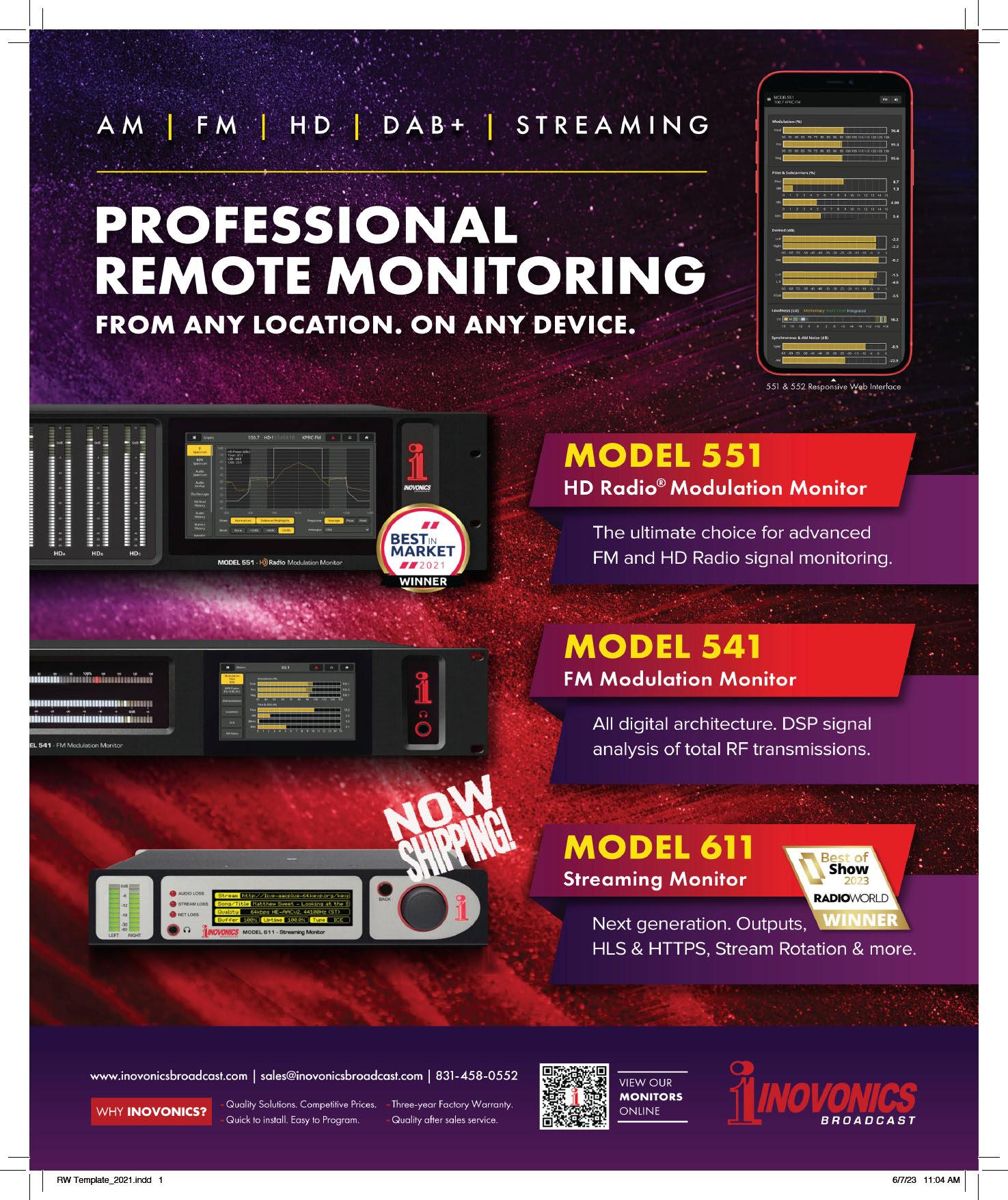
Speaking of audio
Paul Sagi in Malaysia writes that he was fortunate to have an oscilloscope with a Z-axis input on hand while working in an audio repair shop years ago. Check your ’scope for a Z-axis or X-Y mode. If present, use a signal or function generator to set up a Lissajous pattern display on the scope screen.
The Z-axis or X-Y mode permits display of the Lissajous pattern in three dimensions. The glowing green rotating pattern looks striking — to those unacquainted with Lissajous figures, it seems totally surreal.
Having this “screen saver” caught the attention of many customers, mesmerizing them. It can do the same for your air staff and management! Google “How to Make Lissajous Patterns” on YouTube for a more detailed setup and demonstration.
Goo, gone for good!
Reader Mark Peterson sent in a note that when you are trying to remove adhesive residue (like the globs of tape scum from the sides of that Western Electric 111C we talked about last time), head to Walmart and buy a bottle of
Unbalanced, Grounded Source, Twin-Lead Shielded Cable
For use with components equipped with three-wire grounded AC line cord or other ground connection.
Unbalanced, Floating Source, Twin-Lead Shielded Cable
For use with components equipped with two-wire AC line cord or battery power.
Unbalanced, Grounded Source, SingleConductor Coax or Twisted-Pair Cable
For use with components equipped with three-wire grounded AC line cord or other ground connection.
Unbalanced, Floating Source, SingleConductor Coax or Twisted-Pair Cable
For use with components equipped with two-wire AC line cord or battery power.
Above left The protection circuit is simple, as seen in Fred Baumgartner’s hand sketch.
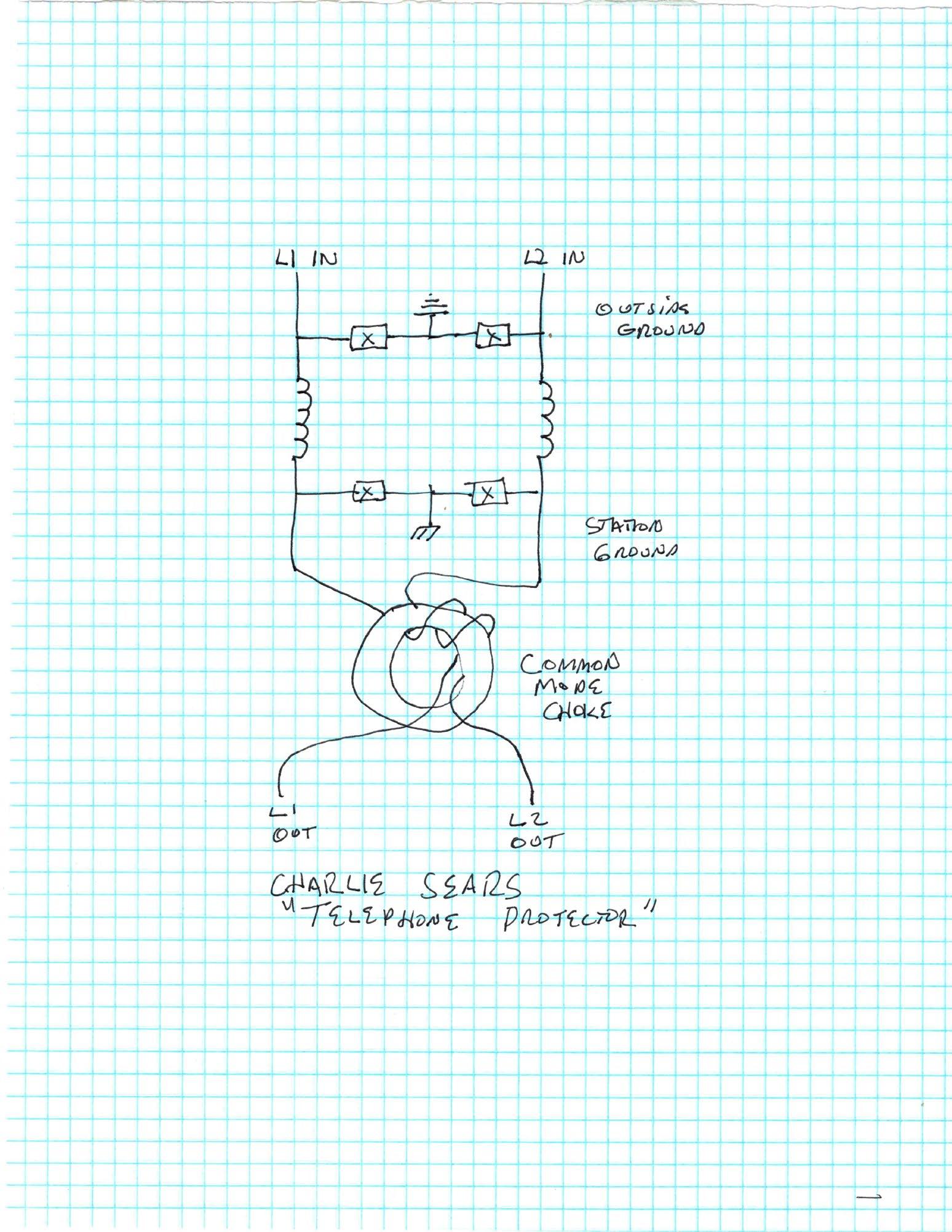
Above The Crown Amplifier Application Guide contains useful connector wiring info. Find it on the Harman Pro website as described in the text.
GooGone goo and adhesive remover. This compound costs less than $5 a bottle. It’s also useful for removing the sticky residue from cables secured to the floor by duct tape.
Blowin’ in the wind? Oui oui!
A reader who shall remain anonymous says he enjoyed reading about the Cumulus site in Washington where engineers signed the floor each time a new transmitter was installed. He shared this story:
On top of the IDS Center — the tallest building in downtown Minneapolis and home to multiple FM signals — there apparently is or was a list of names, written on a ledge in front of a microwave dish. It is a list of engineers who have relieved themselves off the top of the 57-story building at the conclusion of a project. (And, according to further legend, the first name was female.)
Our reader adds that after hearing this story, every time he walked the sidewalks of downtown Minneapolis he wondered about any drop of moisture he imagined he felt!
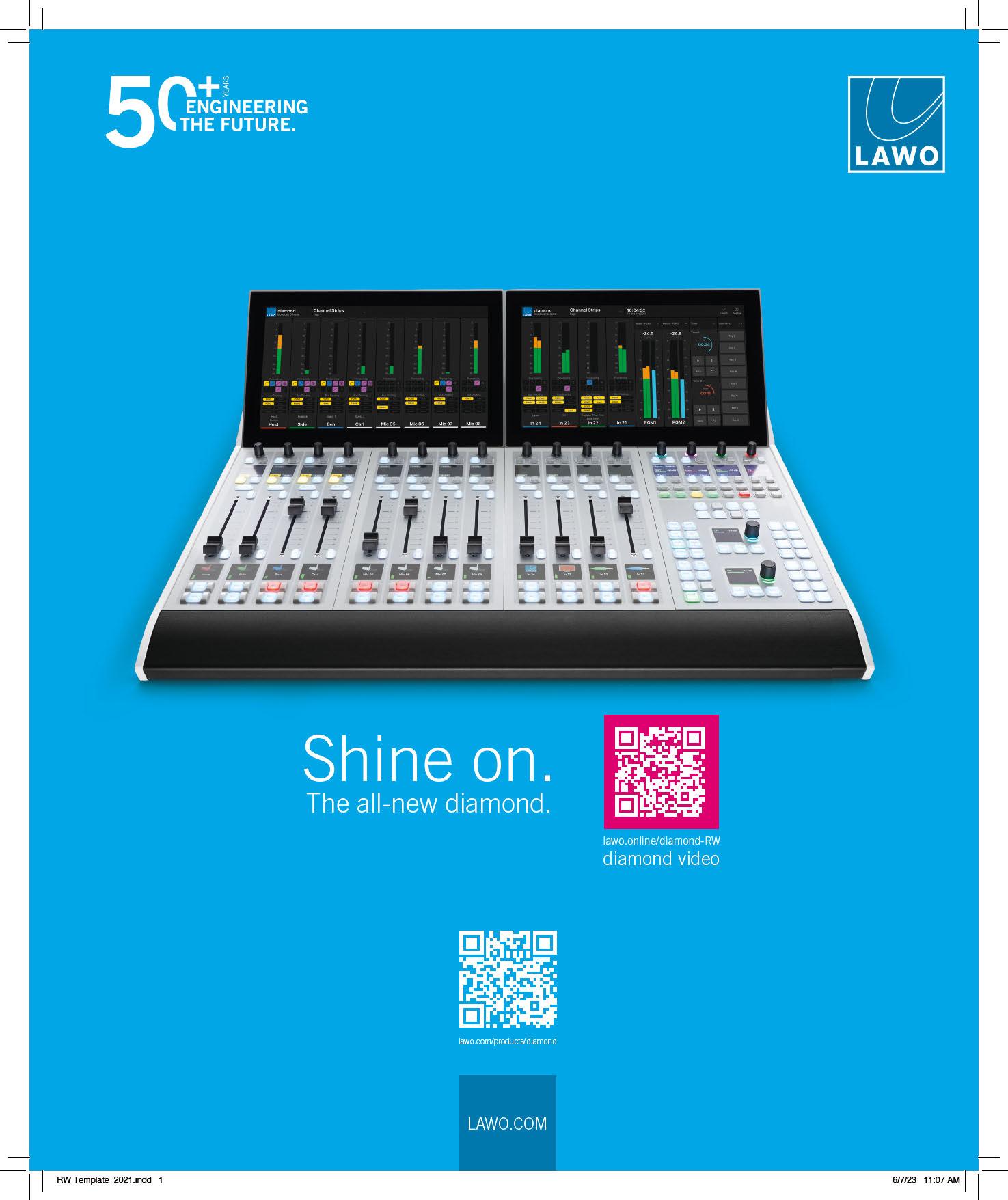
Security considerations for STL applications



Arecent Radio World ebook explored trends and best practices for STLs. Alex Hartman is a partner in Optimized Media Group, which provides broadcast engineering, IT and consulting services; this is an excerpt from his interview.
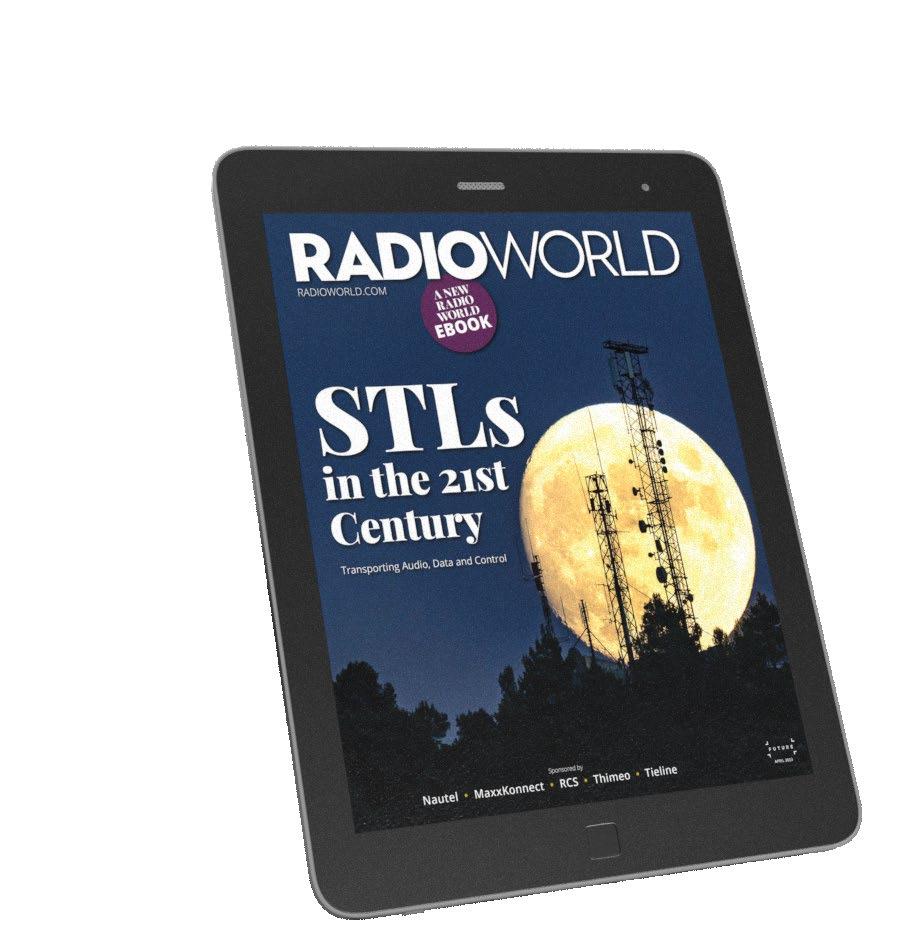
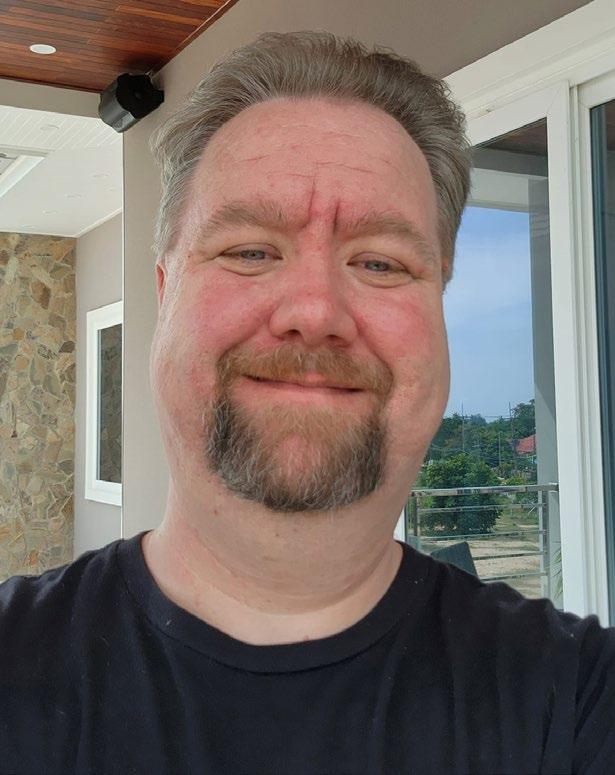
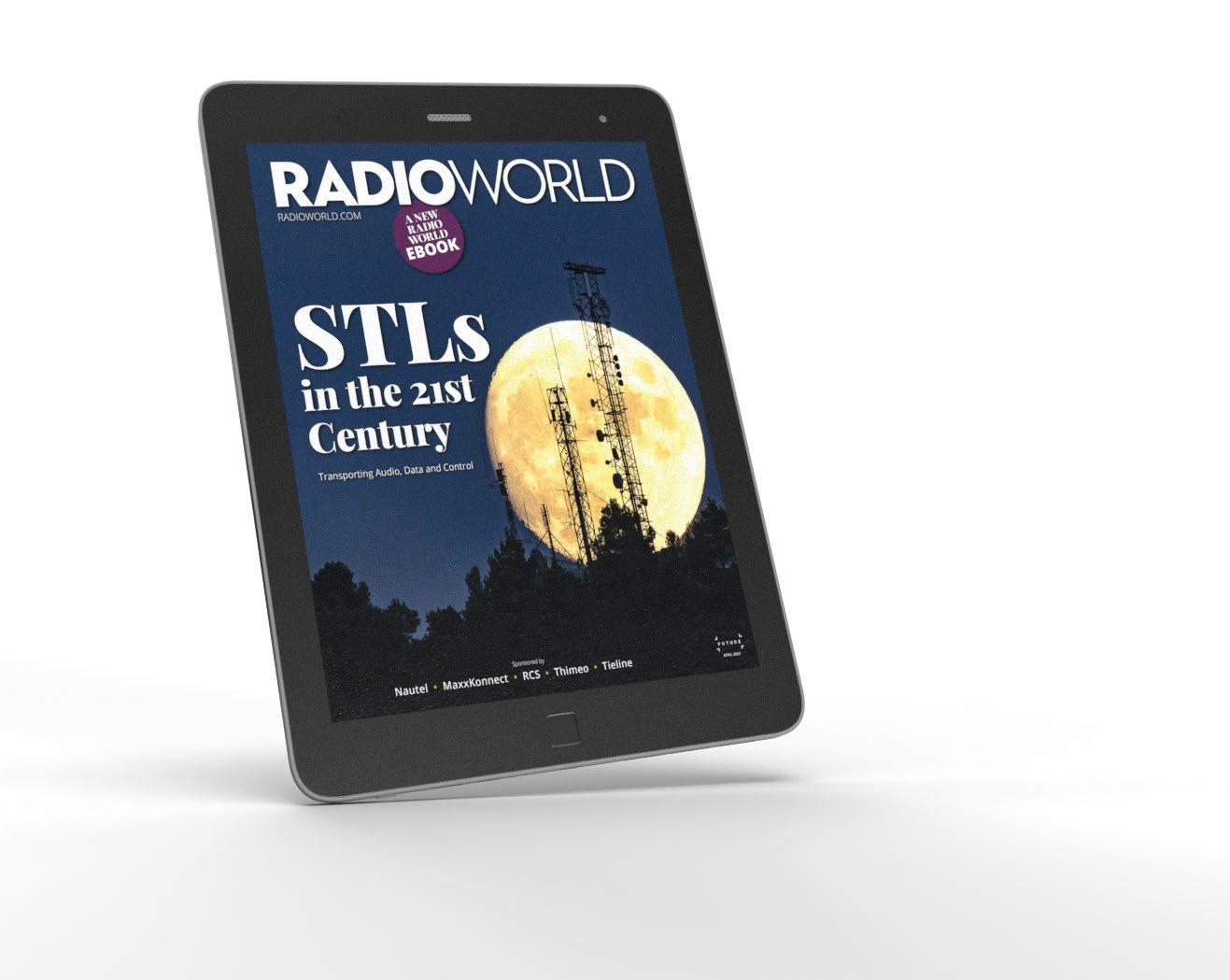
What best practices for security should engineers keep in mind?
Alex Hartman: Stations should be employing IT professionals for this part or outsourcing to a managed service provider to assist.
Firewalls should be restrictive. Multi-factor authentication should be used for any remote access. And everything should be in some form of VPN.
NEVER! EVER! PORT! FORWARD! If the outside world cannot see it, they cannot get in. VPNs are by nature encrypted. The firewall employed should NOT be something you can order off Amazon for 50 bucks or pick up at the local big box stores. Competent systems are moderately expensive and require subscriptions to maintain current lists of malicious threats. Fortinet, Palo Alto, SonicWall are all reputable brands and available with these features. Deploy intrusion prevention and detection software and even some AI metric detection for “abnormal behaviors.”

Speaking of proactive redundancies, any good enterprise should have two firewalls operating in “highavailability” or HA mode, to allow inplace updates and upgrades to assure continuous operation of the business.
Of course external threats are only one type; the other is on the inside. Personal laptops, USB drives, downloading
suspicious audio files, all can make for a bad day. Again: Employ an MSP or IT professional on those specifics. In general, IT security is at the forefront for every broadcaster. Insurance companies are refusing compensation for negligence against ransomware. They’re asking you to “prove you tried” with outlines for security protocols, equipment used and measures taken.
Companies that do manage to get access to a policy are often price-adverse to the premiums and decide to run the risks. Sticker shock sets in. But insurance is pretty cheap compared to the value of your company.
Anything else we should know?

Hartman: The world went IP. The vast majority of traditional STL companies are just now getting there. IP should be your future, from audio to email. But broadcasters are still newcomers to the established IT infrastructure business. There’s a whole new world to learn, and engineers who are set to retire most likely do not want to learn it. A business that relies on IP needs to have a competent IT team to maintain a facility. IT includes backups in their designs, whereas broadcast builds backups AFTER a failure happens. Broadcast needs to get serious about this part. If you’re still storing your entire music library on the on-air computer, stop. If you’re still using DOS-based programs for daily business, stop. If you’re still using the free version of Adobe Audition or Cool Edit, stop. Windows XP? STOP.
Like it or not, IT does not have the shelf life of an old Continental transmitter; it has to be updated and refreshed constantly. Invest in your IT future or get left behind like so many others who failed to pivot.




“IP should be your future, from audio to email”
“Invest in your IT future or get left behind like so many others who failed to pivot. ”
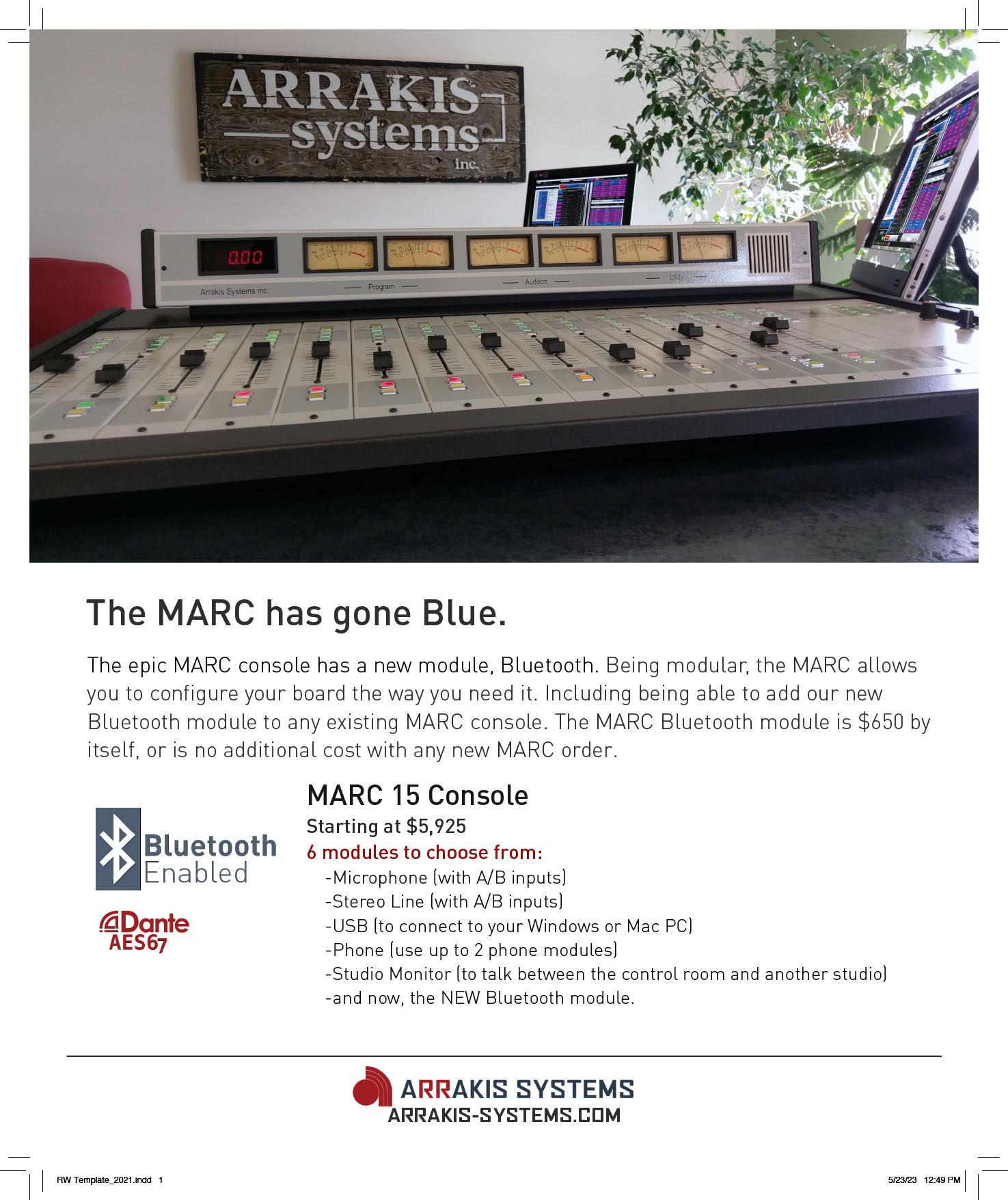

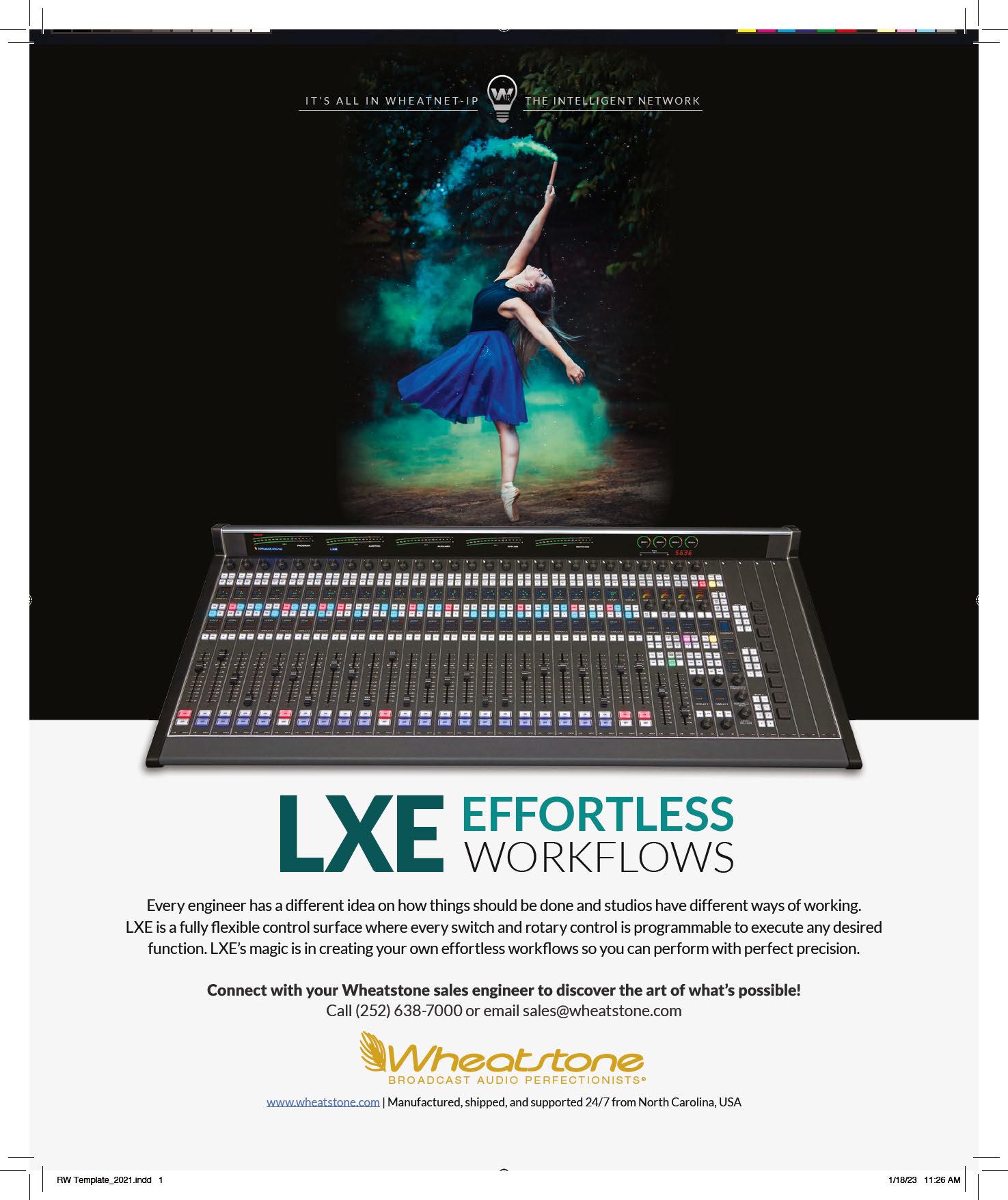 Writer
Writer
KQED renovates, re-relocates, revitalizes
FM facilities are part of a $94 million overhaul
Located in the Mission District of San Francisco, public broadcaster KQED’s new facility is home to KQED FM 88.5 and TV channels KQED 9 and KQED Plus, along with streaming media, podcast production studios and a vibrant community live event space. The building recently underwent a $94 million gut-it-to-the-walls-and-start-from-scratch renovation.
KQED’s journey involved a lot of skill, planning, collaboration and patience. It also took a bit of luck and, in the end, the ability to create opportunities out of crisis.
Radio World spoke with KQED’s Dave Hansen, executive director, media operations and facilities; Donny

Newenhouse, vice president, broadcast engineering and operations; and Peter Cavagnaro, director, marketing and communications, about the long voyage from Mariposa Street to a temporary location in San Francisco’s financial district, and back home again.
Building renovations were funded by KQED’s Campaign 21, the station’s eight-year capital effort, which raised $140 million in total to fund critical infrastructure and technology improvements as well as innovation projects. Donations to Campaign 21 came from nearly 5,000 individuals. The renovated building devotes a significant amount of space to community engagement, a trend becoming more common in public broadcasting.
 Photo: Jason O’Rear/KQED
Tom Vernon
A Radio World contributor since 1983, the author wrote recently about NAB PILOT’s radio test bed.
Photo: Jason O’Rear/KQED
Tom Vernon
A Radio World contributor since 1983, the author wrote recently about NAB PILOT’s radio test bed.

The heart of the building is The Commons, a 3,850-square-foot, 150-seat multipurpose theater, which is the setting for KQED Live, a multiplatform live events program that supports both in-person and virtual participation. KQED Live events are designed to track with public media programming, providing another means for the audience to interact with the station. KQED Live produces around 80 events annually.
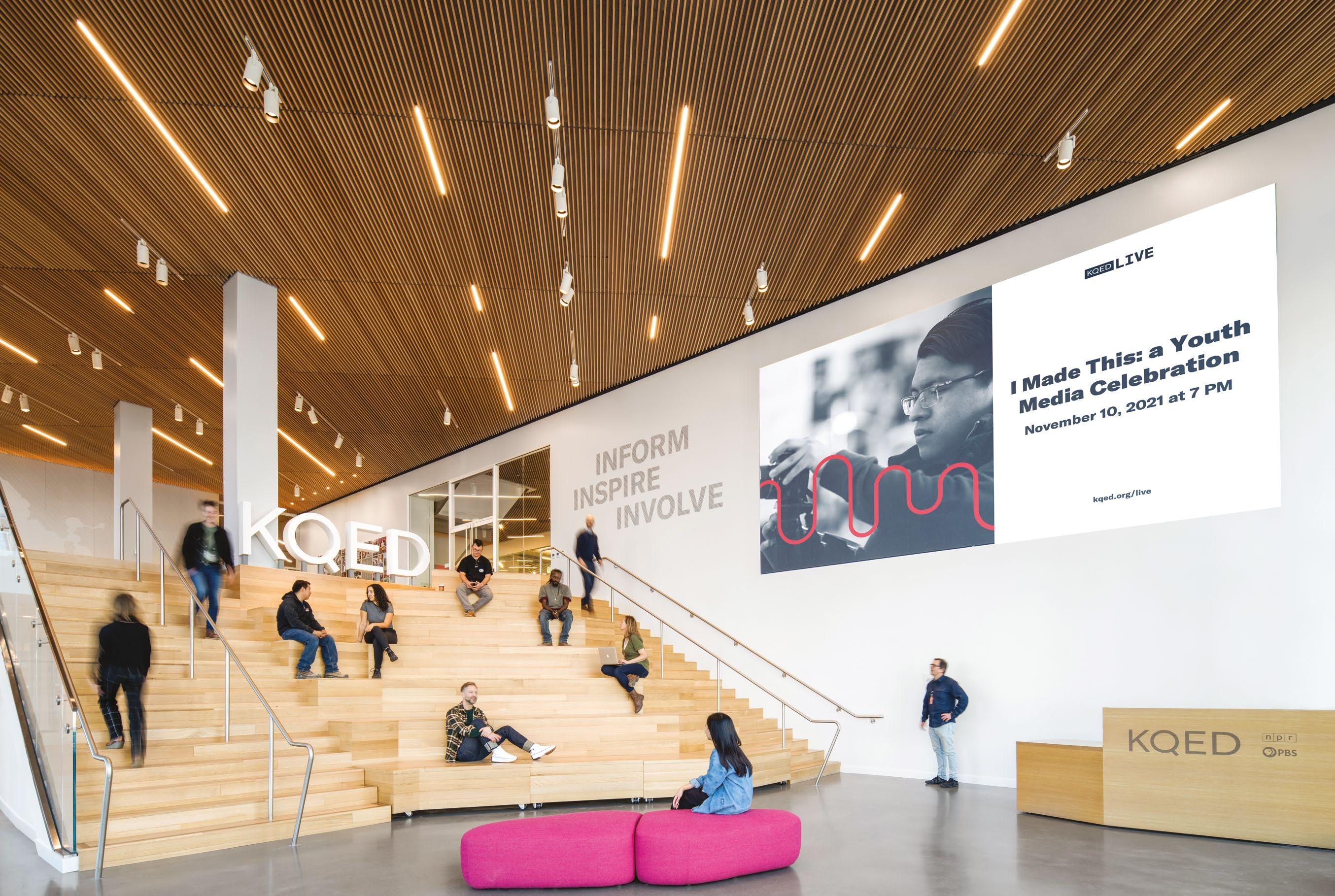
The PRX Podcast Garage at KQED is a community program in the facility that aims to bring a new generation of audio storytellers into the environment. PRX operates in designated multipurpose space, and has been the scene for podcast workshops by the Kitchen Sisters; NPR and podcast producers Davia Nelson and Nikki Silva; Snap Judgment’s Glynn Washington and several others. The program hopes to eventually make studio space and equipment available for aspiring podcasters and audio storytellers.
Temporary studios
KQED moved into its current Mariposa Street location in late 1991. What had been an industrial warehouse space

“ Our goal for the new facility was complete cross functionality.Right Radio Master Control feeds KQED’s locally produced programs and newscasts with national newscasts and programs from NPR and its partners. Jason O’Rear/KQED
was revamped to accommodate KQED’s corporate and technical operations.
After 20 years of station growth and changes in media, a rethink was long overdue.
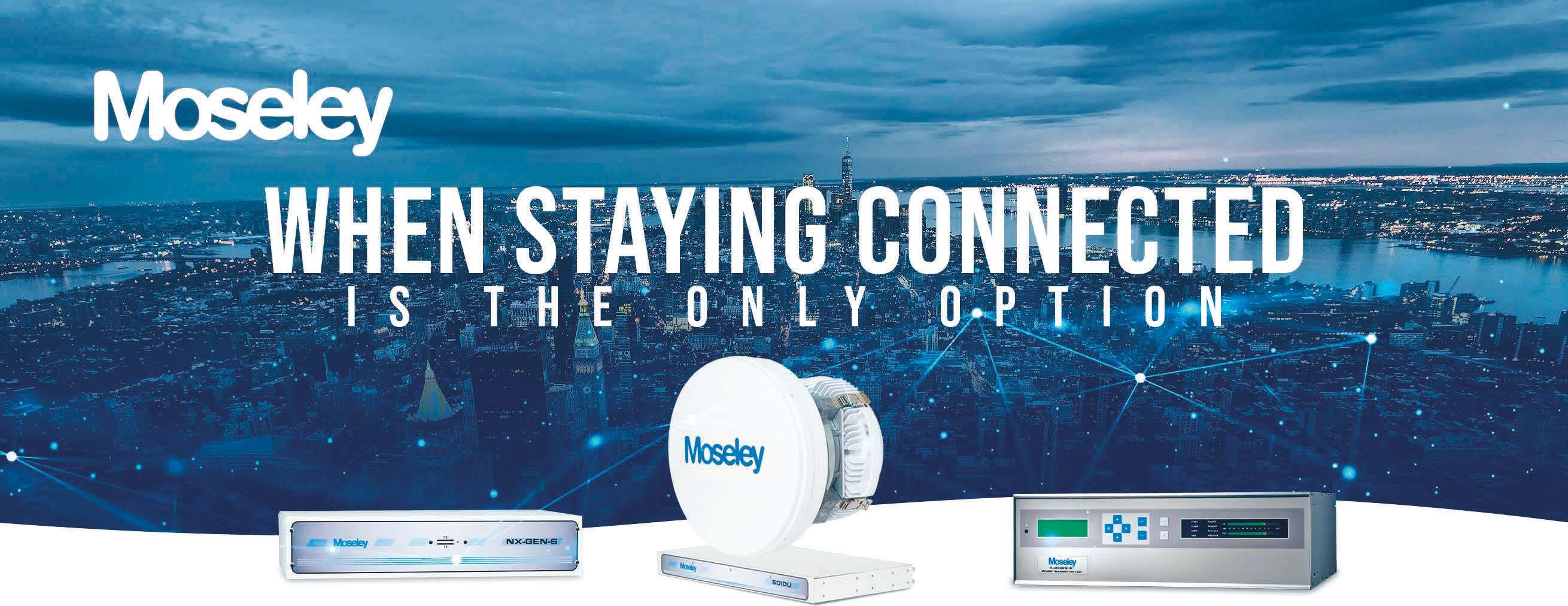
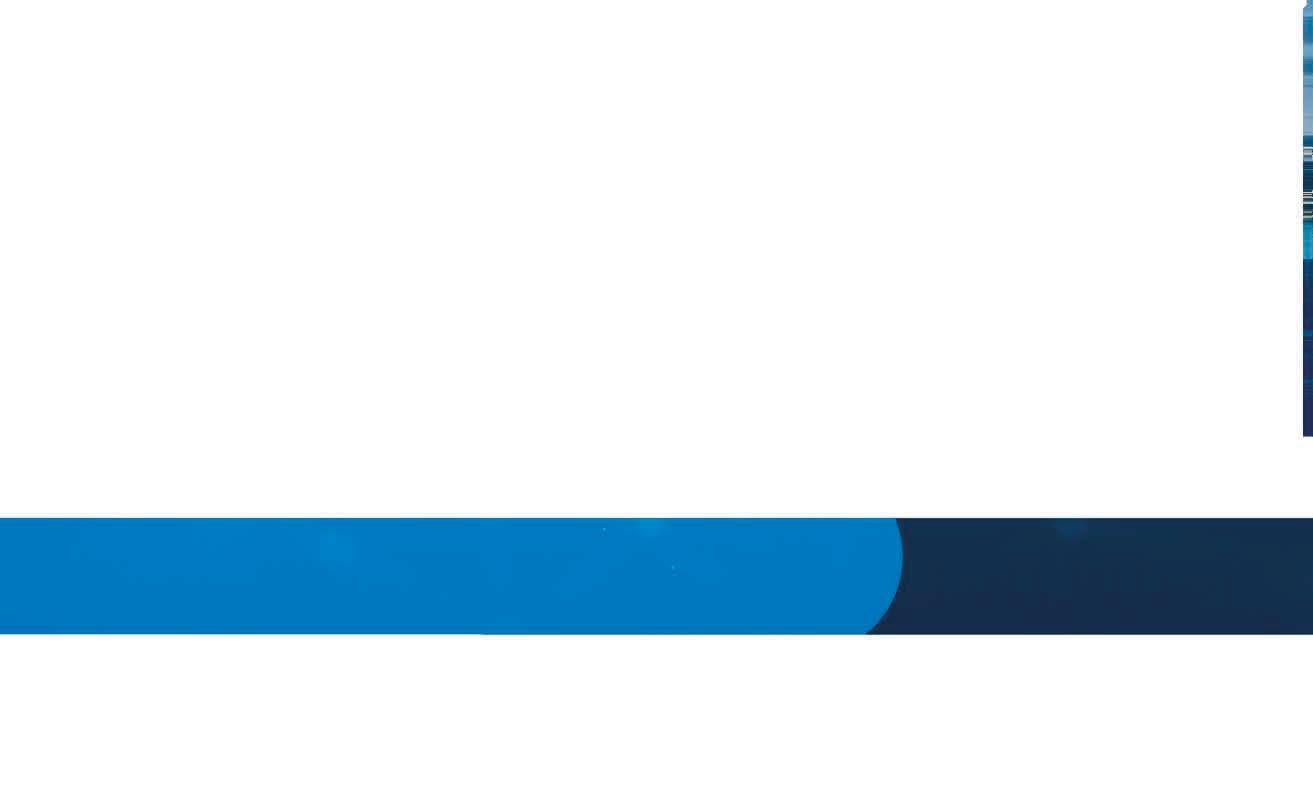
“There had been incremental upgrades and renovations over the years, and yet more modifications when we went to HDTV in the 2000s,” said Dave Hansen.

“By then, it had reached the point where the basic configuration of the building was no longer meeting our needs. We had simply outgrown the space as it existed.”
That realization set in motion a planning process to consider the options.
The choices came down to selling the Mariposa Street building; purchasing a new space in an expensive and competitive Bay Area real estate market and starting over; or temporarily moving to another location while their old space was renovated, and then moving back.
Hansen said the decision came down to financial responsibility. “Even though it involved complex logistics, temporary relocation and moving back was deemed to be the most financially responsible option.”
Their course now set, one of the first steps for KQED was finding a suitable rental space while the projected 2-1/2-year renovation was completed, no simple task in the San Francisco real estate market. Then luck intervened.
Facility Profile
Above
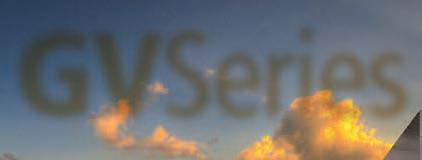
The open-plan newsroom includes a tribute on the rear wall to the “transformational leadership of John Boland, president and CEO of KQED, 2008–2019.”
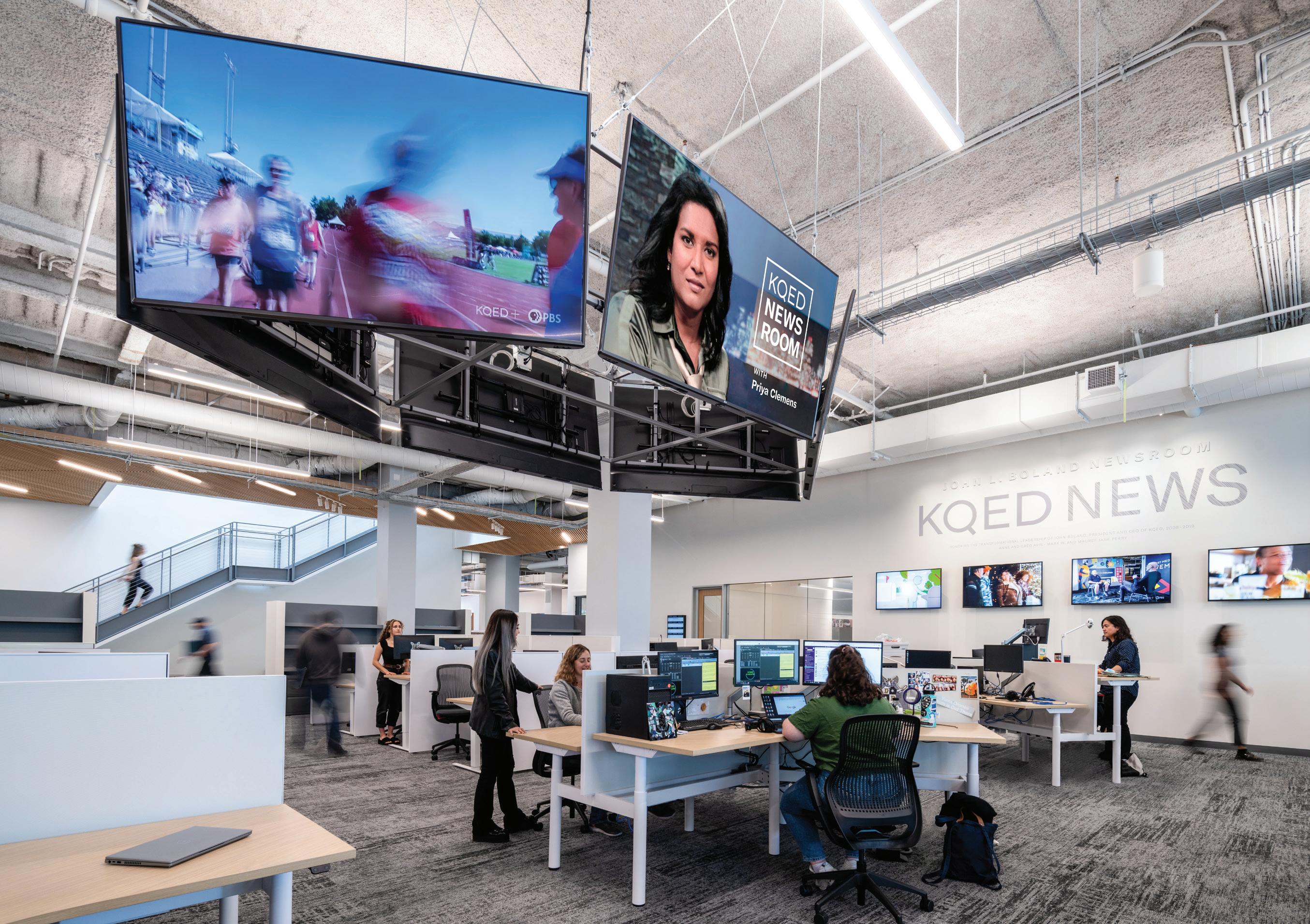
“Our real estate partners managed to connect us with Bechtel Engineering, who were in the midst of relocating their downtown Beale Street offices to Virginia,” said Hansen. “It turned out they were looking to sublet their space for the remaining three years left on the lease.
“The space was already built out and furnished for our corporate needs. We moved our TV productions to a local studio, Media One. Finding a furnished space downtown in this time frame for a reasonable lease is really what made it all work.”
Plans were soon underway. Tech teams were mobilized to build the temporary radio and TV studios, and to engineer new connections to the outside world.
Newenhouse and his team decided the best strategy was to upgrade studio gear when moving into the temporary location, making the return to Mariposa Street easier.
“At the same time,” Newenhouse said, “the old analog/AES Studer consoles were replaced with Lawo Crystals

in the edit booths and Lawo Rubys in the four control rooms. Audio routing was upgraded from Lawo Nova 73 to PowerCore.”
The decision to upgrade at this point would pay huge dividends as later events unfolded.
Other key radio components included Dalet Galaxy media asset management; Telos on-air phone system; GatesAir Intraplex IP Links and codecs; Electro-Voice RE20 microphones; Forecast Consoles technical furniture; and acoustic design by Russ Berger Design Group.

Interoperability
Part of the strategy for the new facility included blurring the lines between radio and TV.
“In the past, the two sides were very siloed,” said Newenhouse.

“Our goal for the new facility was complete cross functionality. This means intake across radio and TV on the same control system, all sources from both sides available to all platforms and all crew trained to manage different disciplines.”

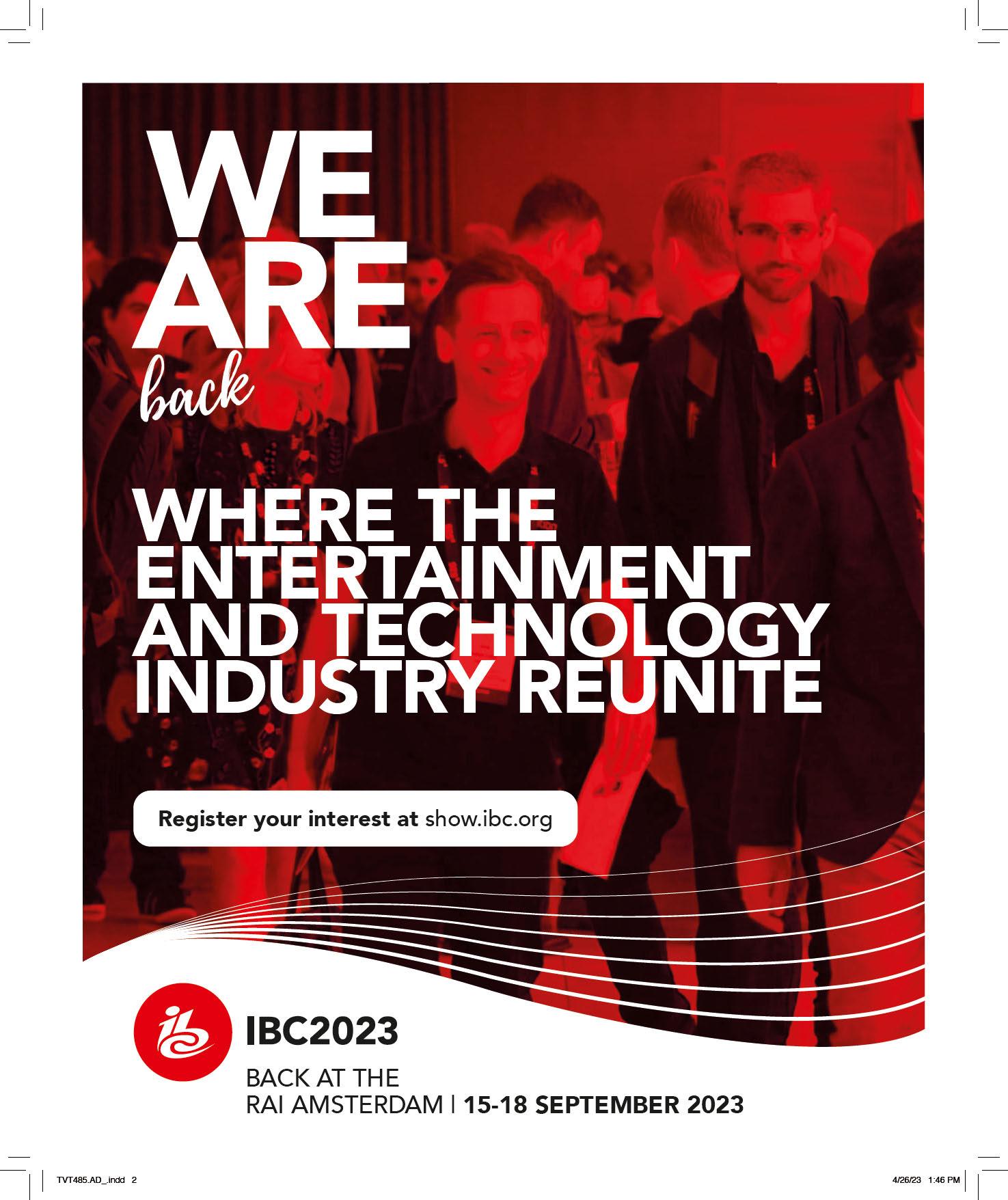
Dave
Above
Newenhouse adds that the infrastructure is largely fiberbased, with most traffic moving away from AES to AoIP, and unified control systems with native Quartz. “There’s very little analog left in the facility,” he said.
No large renovation project goes quite according to plan, but KQED’s staff faced unprecedented challenges shortly after the Mariposa Street building was gutted in the fall of 2019.
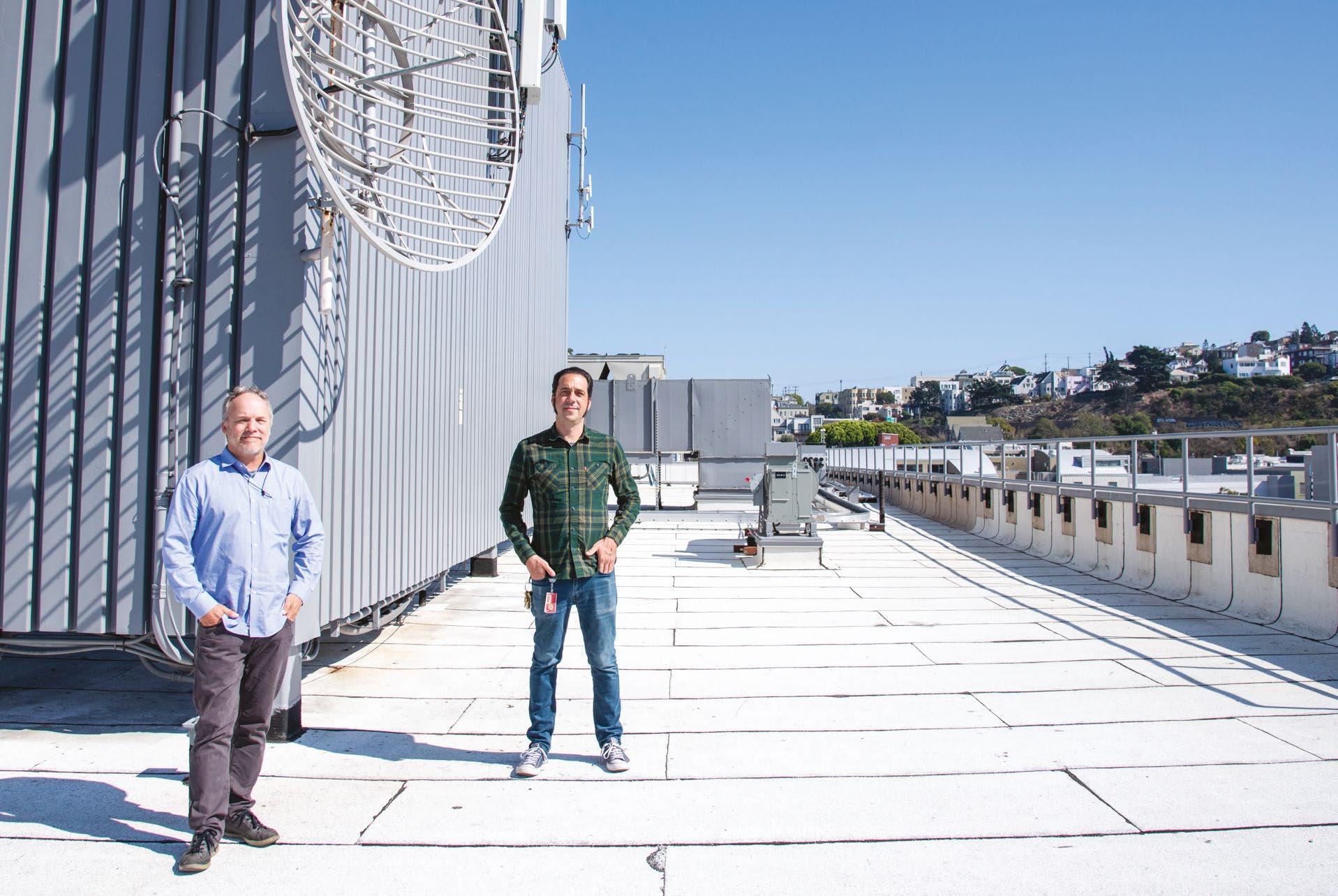
“That’s when the pandemic hit,” said Hansen. “The impact was unimaginable, everything just stopped. On a project of this magnitude, the initial two-week halt could be catastrophic. We had to get a letter from the mayor’s office
declaring that our renovation was an essential project so that we could continue construction.”
But that wasn’t the only problem. “We were in the midst of this massive renovation project, and suddenly we all had to pivot and design new workflows that would enable people to work from home,” Newenhouse said.
“Comrex Access units were sent to most of our employees. We had to enable everyone to virtually access their workstations. Our op techs continued to work from the studios to build this workflow infrastructure from scratch.”
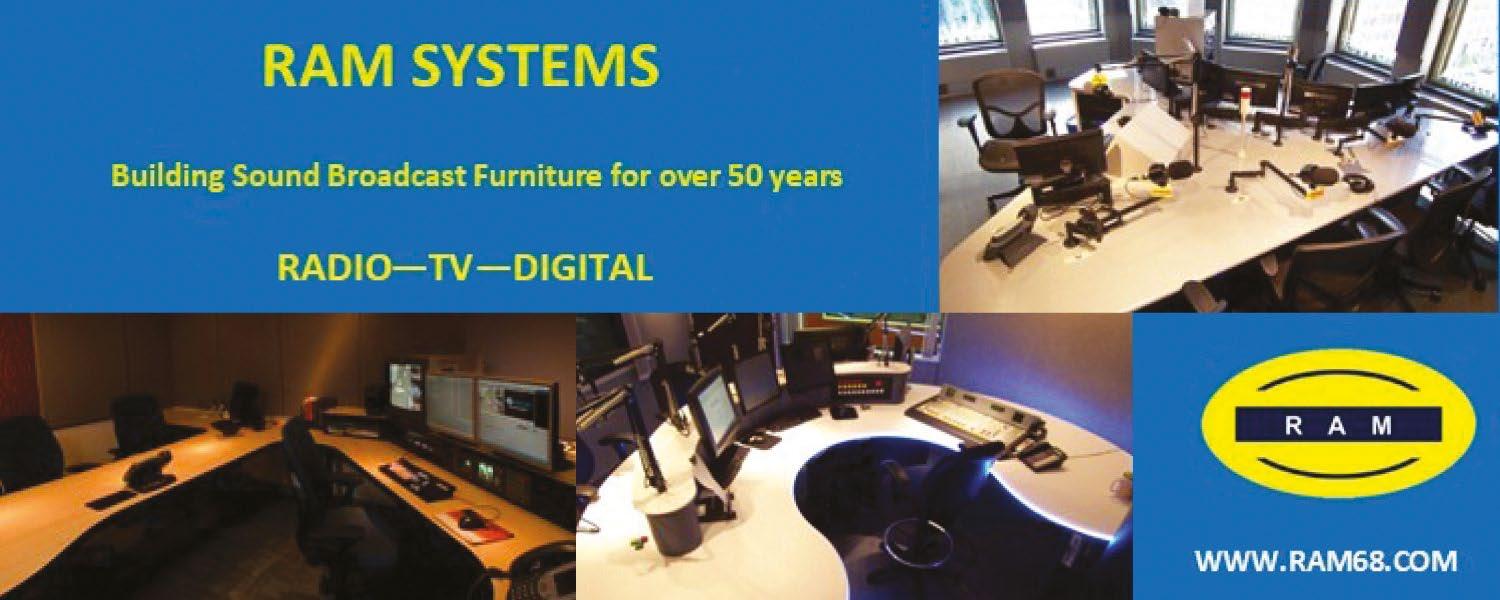
In the midst of this near-chaos, Hansen said something went in their favor. “We were able to reconfigure and leverage the new technology that was installed when we relocated to the temporary locations at Beale a year prior, that is what really made this transition possible. The way our tech was set up before the move out of Mariposa Street, it would simply not have been possible for people to work from home.”
Meanwhile, the FM part of the operation began a disaster-recovery project, leveraging its old equipment to build emergency studios at Sutro Tower. All types of access were included,
Hansen and Donny Newenhouse atop KQED’s San Francisco studios and headquarters.and that part of the project was completed in the next two to four weeks.



A matter of debate
While Newenhouse and his team had tried to build as much redundancy and flexibility into the new facility as possible, it hadn’t been tested to full capacity during the first year of operation. That was about to change. On Oct. 23, 2022, KQED hosted the only California gubernatorial debate between Gov. Gavin Newsom and state Sen. Brian Dahle.
As Cavagnaro recalls, planning for this had to come together in a hurry. “Scott Shafer and Marisa Lagos from KQED’s Politics and Government team were in touch with the two candidates about setting up the debate. We didn’t get confirmation from Brian Dahle’s campaign that he would accept the invitation until maybe just short of three weeks before the scheduled debate on Oct. 23. So the preparations happened in quite a hurry. That was a challenge.”
The debate was hosted in The Commons, KQED’s multipurpose event venue.
“This space is state-of-the-art and built for audio and visual recording. What made this debate a unique opportunity in using The Commons, was that this was the first time all of the systems we designed and installed in the space were used in order to broadcast live on radio and rebroadcast later that evening on television.”
Another big part of the broadcast was to make the feed available to other television stations for simulcast or to rebroadcast later. In contrast, production for the 2018 debate was only broadcast live on radio and shared with other radio stations. There was no television or video component.


One of the major lessons learned from this, according to Cavagnaro, is that not all stations use the same technologies or platforms for receiving simulcast feeds, particularly between commercial and public media stations. To solve for this, KQED engaged with The Switch to host their television feed in the larger market California distribution hubs
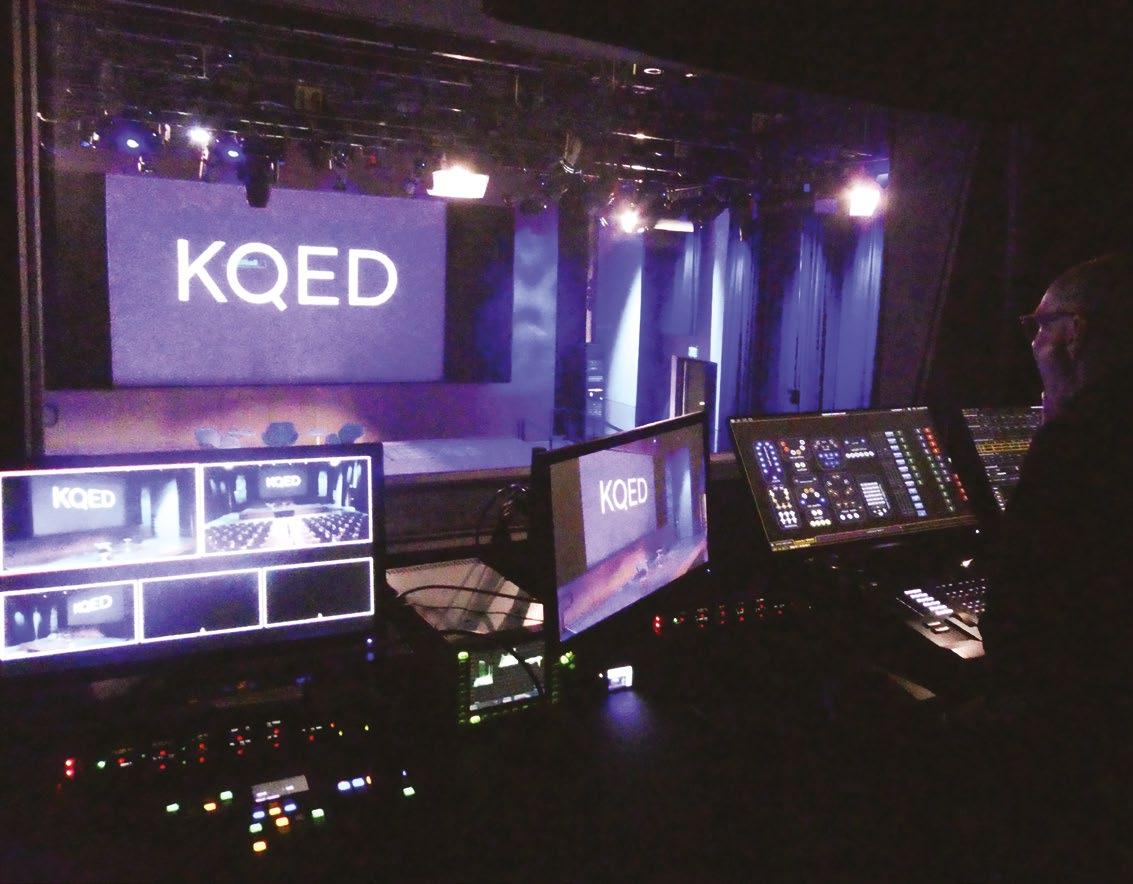
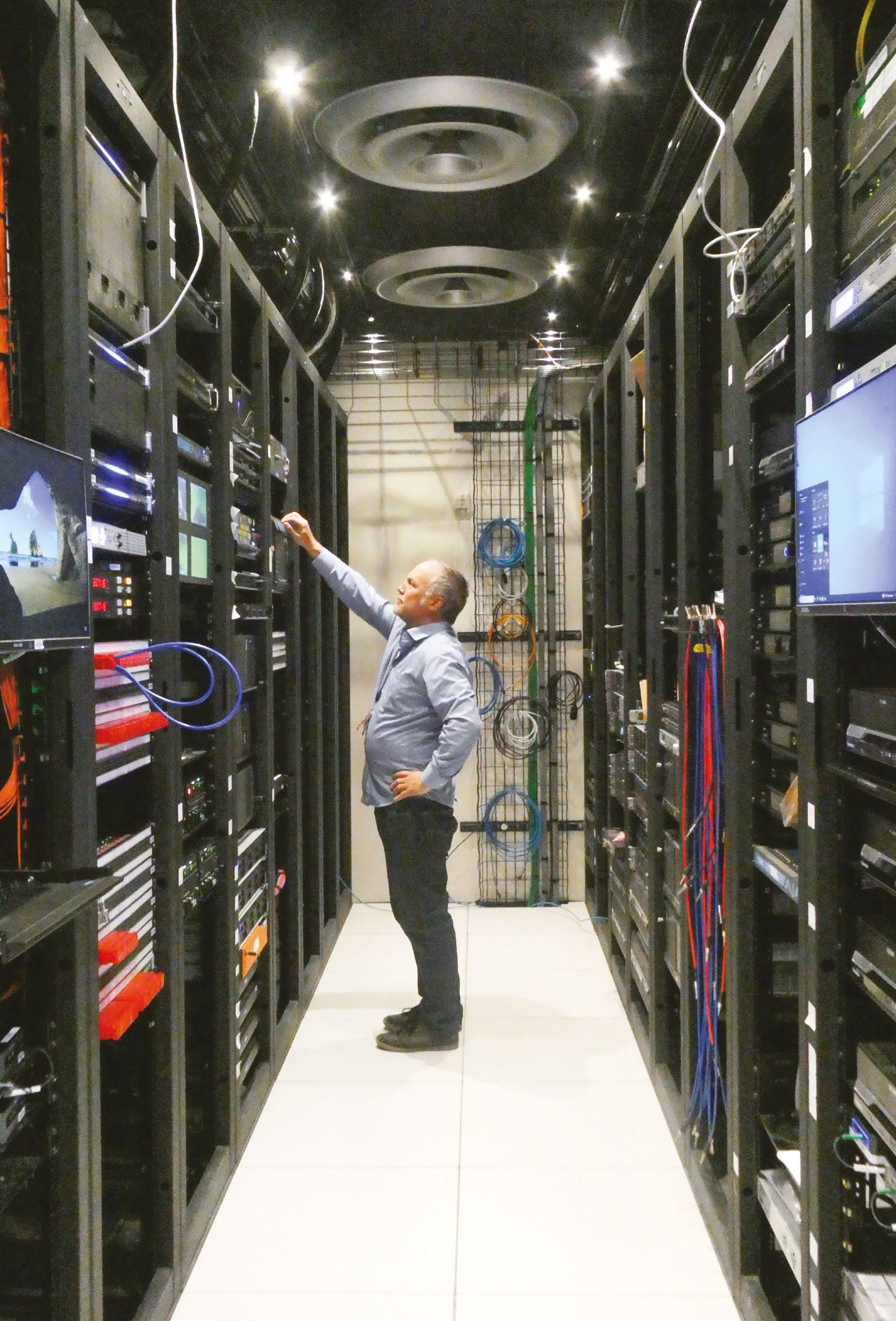
The Switch also made the debate available via satellite uplink, which could be accessed by stations that did not subscribe to The Switch. Since KQED only broadcasts locally to the San Francisco area and this debate was of consequence to all Californians, the goal was to ensure that stations in every market across the state not only had awareness but could broadcast on their own channels and platforms if they chose to.
According to Cavagnaro, the broadcast went perfectly. “There were no issues, and everyone was really pleased with the quality of the setup, conversation and production. Distribution through The Switch and ContentDepot ran as planned. The debate was either simulcast or rebroadcast by several other stations across the state and also nationally via C-SPAN.” Reflecting after the event, Cavagnaro found positives.
“As far as what worked, we were quite pleased with the production and how the space and its technology suited the production. Moreover, this was a massive cross-departmental collaboration with news, TV and radio operations, radio and TV programming, station relations, and marketing and communications all working together on a complex project against an intense deadline. A true team effort.”
“
The renovated building devotes a significant amount of space to community engagement, a trend becoming more common in public broadcasting.
Beasley Gets Into AI-Generated Video
Beasley Media Group has signed on to use an AI-based video platform to support its stations. The tool is used to create video ads for clients in a matter of minutes.
The natural-language video creation platform is offered by Waymark, which calls its agreement with Beasley “a first-of-its-kind generative AI deal for local radio stations.”

“Waymark’s AI-powered video platform enables local businesses to generate high-quality commercials with professional voice-over in five minutes or less,” the technology provider states in its announcement.
It said Beasley can use the tool to give its advertising partners “instant and affordable video creative.”
Beasley is using the service so far at stations in Detroit, Las Vegas, Charlotte and a few other markets and plans to expand it; Beasley Vice President of Operations Kevin Rich was quoted saying local advertisers are looking for more effective and cost-efficient ways to stand out and attract customers across multiple media platforms.
CEO Alex Persky-Stern is CEO of Waymark, which was founded in 2017. The company says the agreement with Beasley is its first major
step into radio, following national video deals with Spectrum Reach and Gray Television Stations.

“With the rise of connected TV and free ad-supported streaming TV channels, this opens a host of new marketing opportunities for local advertisers.”
Info: https://waymark.com/
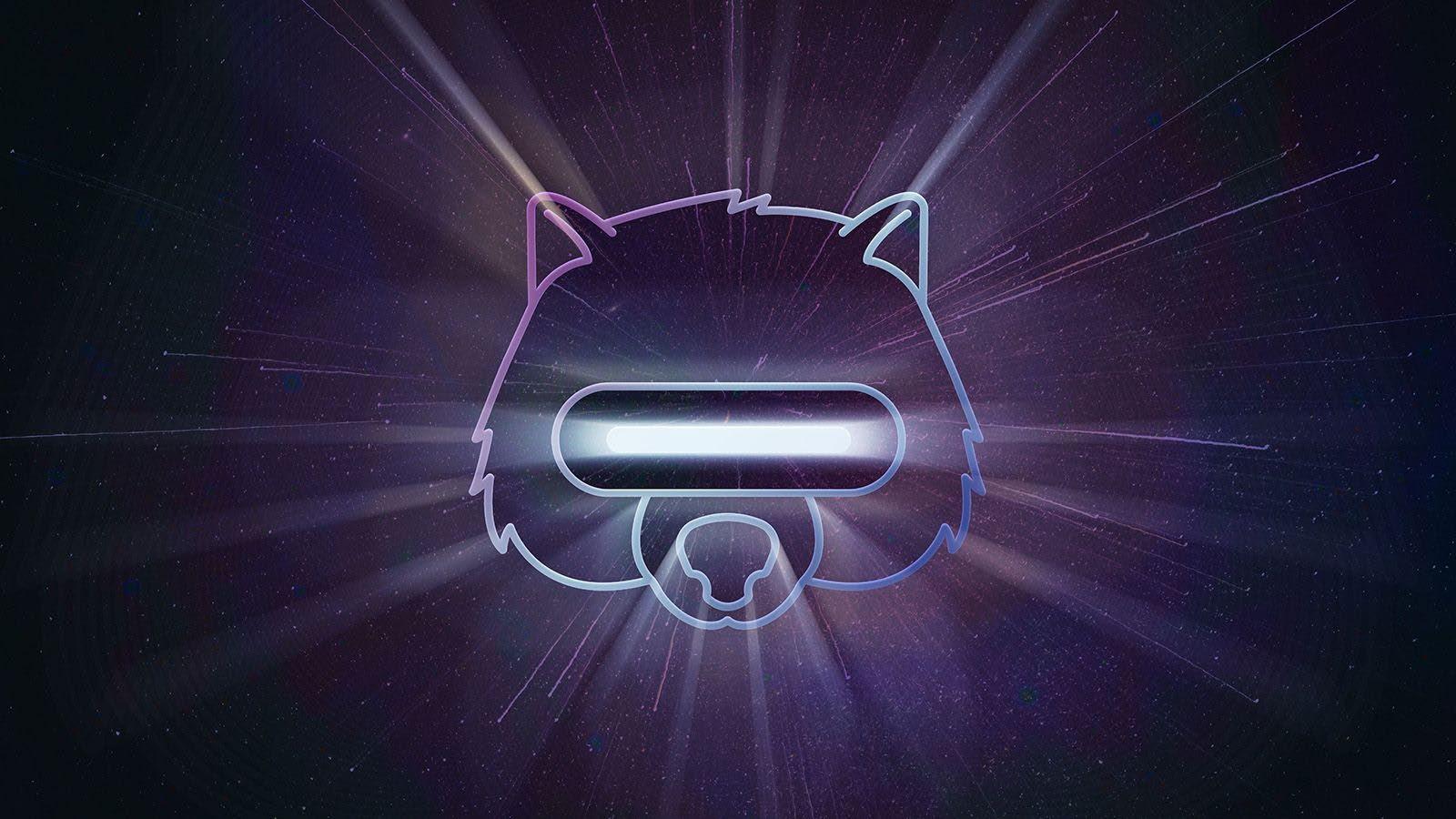

Daniel Anstandig addresses worries about AI and RadioGPT
Futuri founder responds to concern from an RW reader
The following letters to the editor appeared a few days apart on Daniel Anstandig addresses worries about AI and RadioGPT
I tried to hold off, thinking that I would cool down a bit after reading the April 26 article “Futuri Grabs Radio’s Attention With RadioGPT.”


Who does Mr. Anstandig expect to fool with his statements, which include: “I love radio and we are helping shape the future of broadcast media, which means finding ways for audience and revenue growth for broadcast.” Further he states: “I do not believe people are going to be replaced by AI, but I do believe those people will be replaced by others who use AI.”
What? What does that mean?
Of course the intention is for this software maker to sell software that will essentially [help] stations that are having some revenue problems to let go of expensive on-air staff in lieu of cheaper computer based-programs. Who wants to listen to computer-based programs? We do it on phones trying to call your doctor’s office or anywhere else. How well does that go?
I’m glad that the college station that I work for in Cleveland, and others here, want the “personal” feel of
making a difference in people’s lives by taking requests and dedications and having meaningful telephone conversations with callers. This is still real radio.
If Zen Zapis, who owned WZAK in Cleveland where I worked in the mid-’60s, would have known that his relatives were helping in a way to eliminate real radio personalities, he may be turning over in his grave. The only artificial intelligence then came from the Ampex tape recorder when we hit “play” to start the Italian or Greek weekly transcribed radio variety shows.
Great for Mr. Anstandig trying to make a living selling his product, but at the cost of many talented persons’ livelihood? The way of the world now.
Terry Stevens WJCU on-air personalityDaniel Anstandig responds
Since announcing RadioGPT’s launch, I’ve heard thousands of passionate responses, pro and con, and I understand the emotion behind them.
What I’ve never understood is radio’s willingness to “give up” on local communities by pulling personalities and resources out of small and medium (and well, even large) markets. But that’s not an AI problem. That has been going on for 25+ years. Projecting your frustration about this onto AI won’t make you more competitive. Embracing new technology, especially when it has the potential to eliminate certain roles, can be scary — and that is happening in every industry on every continent. The fact is, making technology work for you is far more advisable than trying to stop technology’s progress. That never works.
I feel the need to respond to the above letter because the writer questioned a quote from me about my personal love for radio.
“Great for Mr. Anstandig trying to make a living selling his product, but at the cost of many talented persons’ livelihood?
I find it ironic that the letter’s author is from WJCU. Why? Well, when I was nine, I built a low-power transmitter and broadcast a call-in request show from my parents’ basement. After the authorities inevitably came knocking and shut down my “operation,” I started getting involved with WJCU. This was back when it was run by Dave Reese. Father Bill Bichl and Dave Reese were incredible mentors of mine at a young age at John Carroll University. I have loved radio since before I learned long division. If anything, that love has grown.
I’m extremely passionate about ensuring radio stays healthy and relevant for decades to come. And the fact is, there are some in our industry who need a wake-up call about what it’s going to take for that to happen.
I certainly agree with the author’s assertion that listeners want radio to have a personal feel. I also know that the vast majority of commercial radio stations in the U.S. are not staffed by a live and local human 24/7. Not even close.
So what happens in those dayparts that aren’t staffed? Allsweeper airshifts or voice tracks.
While some voice trackers are better than others, I agree with Valerie Geller on this. She recently said, “A lot of the voice-tracking I’ve heard already sounds like AI. There’s nothing human about it. It’s just a broadcaster playing an actor playing a broadcaster.”
The mindset that all listeners will stick with your brand during lackluster dayparts just because they love one or two of them is hubris. Giving your existing talent the right technology to make that personal connection with their audiences in the modern fashion they expect, and then surrounding them in unmanned dayparts with content that’s highly relevant to the local market, is not only wise — it’s crucial if “real radio” is going to maintain its audience, find new audience and continue to generate revenue from advertisers who have never had so many options for their dollars.
Radio as a medium is more than 100 years old. Today’s talented radio professionals deserve technologies and operating strategies that keep pace with the times. My team and I will continue to develop them. And I’ll never stop loving radio.
Daniel Anstandig CEO and founder FuturiWait, hold that shovel …
Frank McCoy wrote about chief engineers (“Solutions for the CE Recruitment Problem,” search “recruitment” at radioworld.com).

Yes, broadcasting is turning more into an IT-based business every year and more IT people are needed. But right now, in 2023, radio stations are making money on the RF signal, not the internet stream. And the guys who maintain the RF signal are going away faster than the transition to totally IP based radio.
IP guys are like television repairmen in the early days of television. There was one on every street corner but only about 20% of them could do more than change tubes.
Of the IT people I’ve known, it seems that about 50% really know what they’re doing; the others just poke around until the system starts to work.
I’ve been in radio and TV engineering nonstop since 1966 and have retired three times since 2015. No matter how hard I try, I
am still working. When I am called to do work, it is almost always a transmitter failure, an antenna issue, a directional AM issue, an audio problem or some other “classic” radio broadcast problem. There are still a lot of transmitters and analog gear running, and there will be for some time to come. The guy who can maintain that kind of equipment is who we need right now — a guy who can swap out a 4CX20,000 and retune the rig back to specs … a guy who can deal with a 12 kV power supply … a guy who can find a hum or distortion in an analog audio chain. Those are the guys who are needed much more than IT people.
I just know that when my day comes and they’re lowering my box into the six-footdeep hole, some GM is going to run up to the gravesite and say, “Pull him back up quick, our Continental 816 is off!”
Ron Schacht“
The vast majority of commercial radio stations in the U.S. are not staffed by a live and local human 24/7. Not even close.
